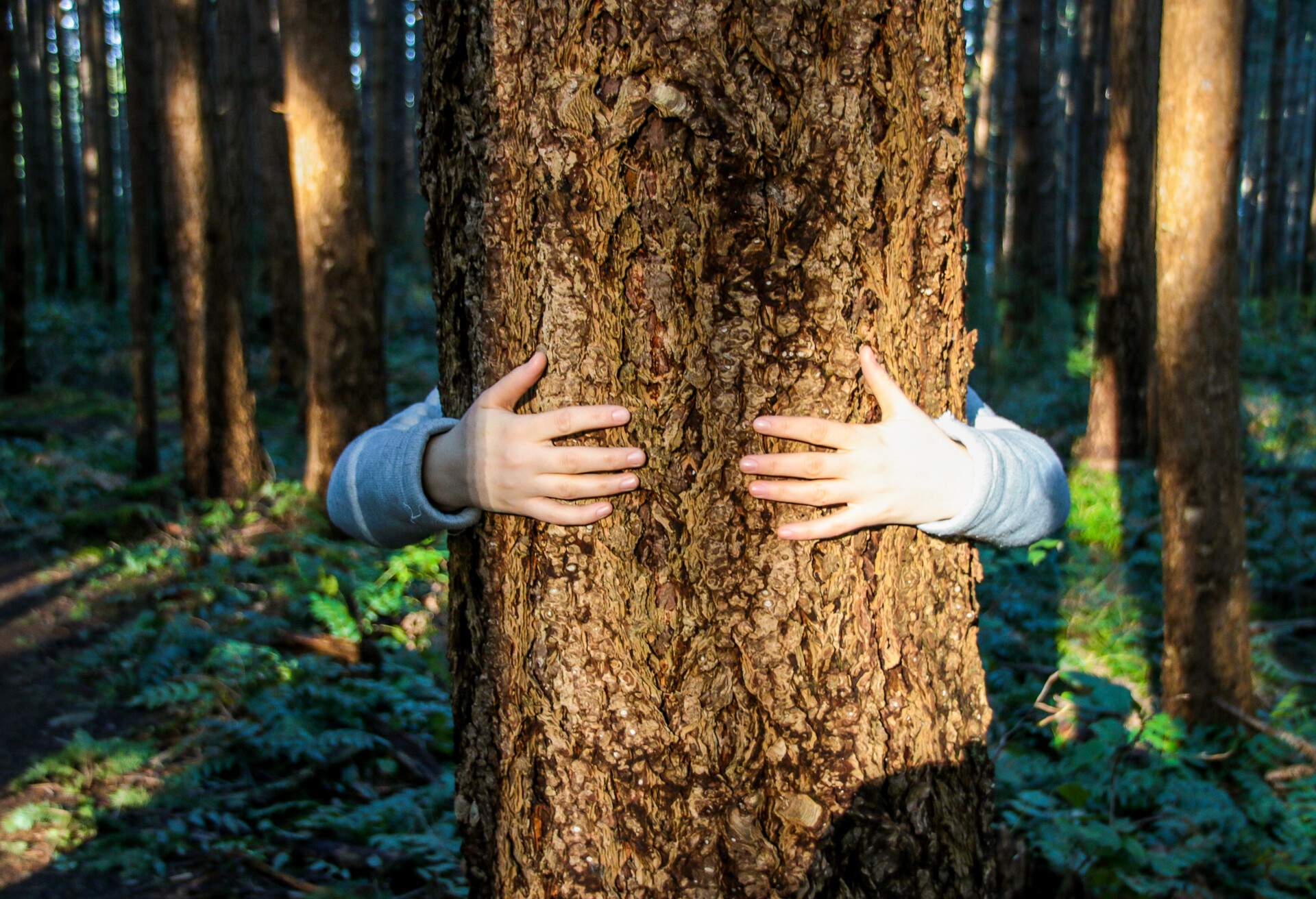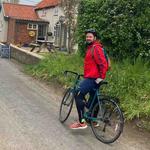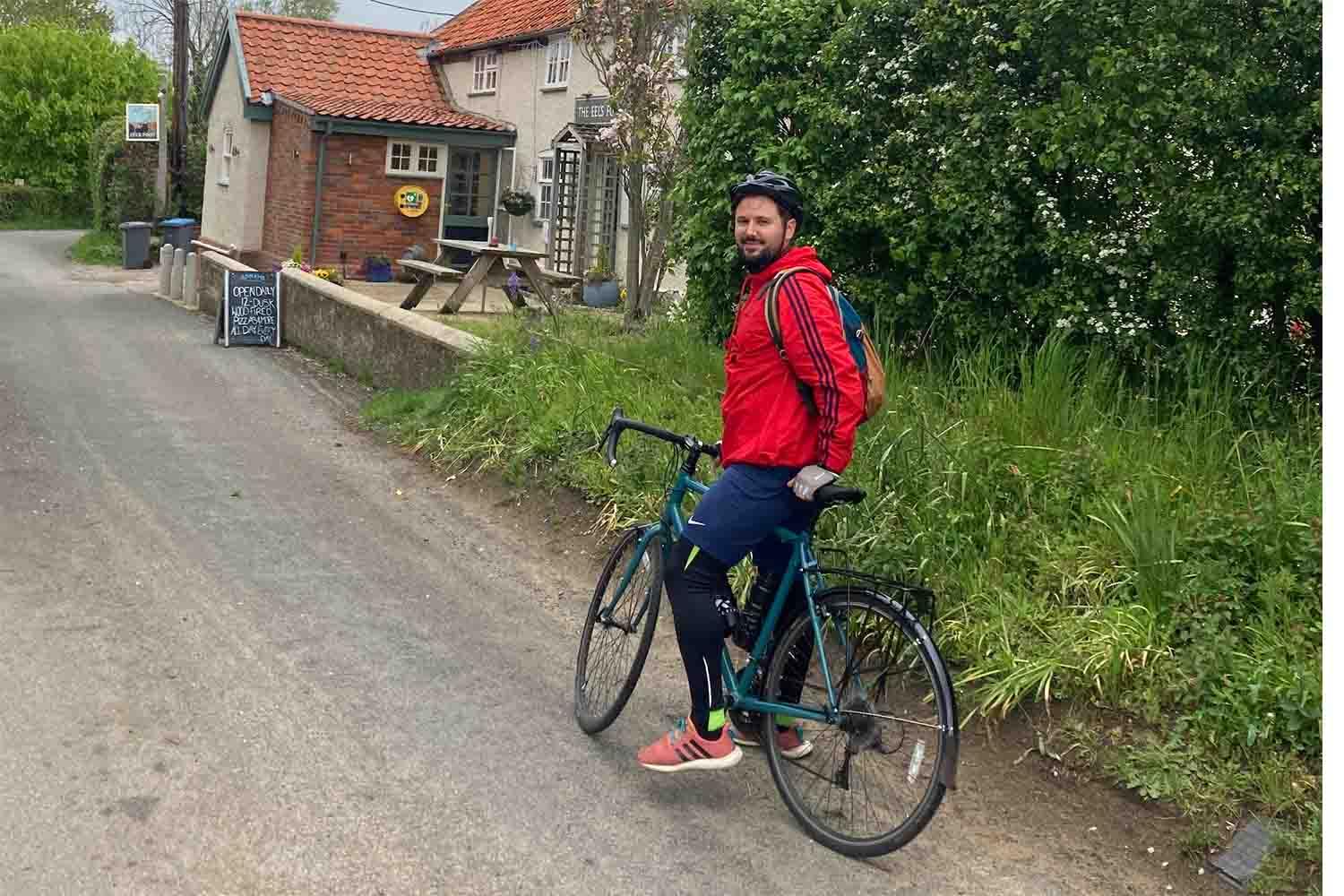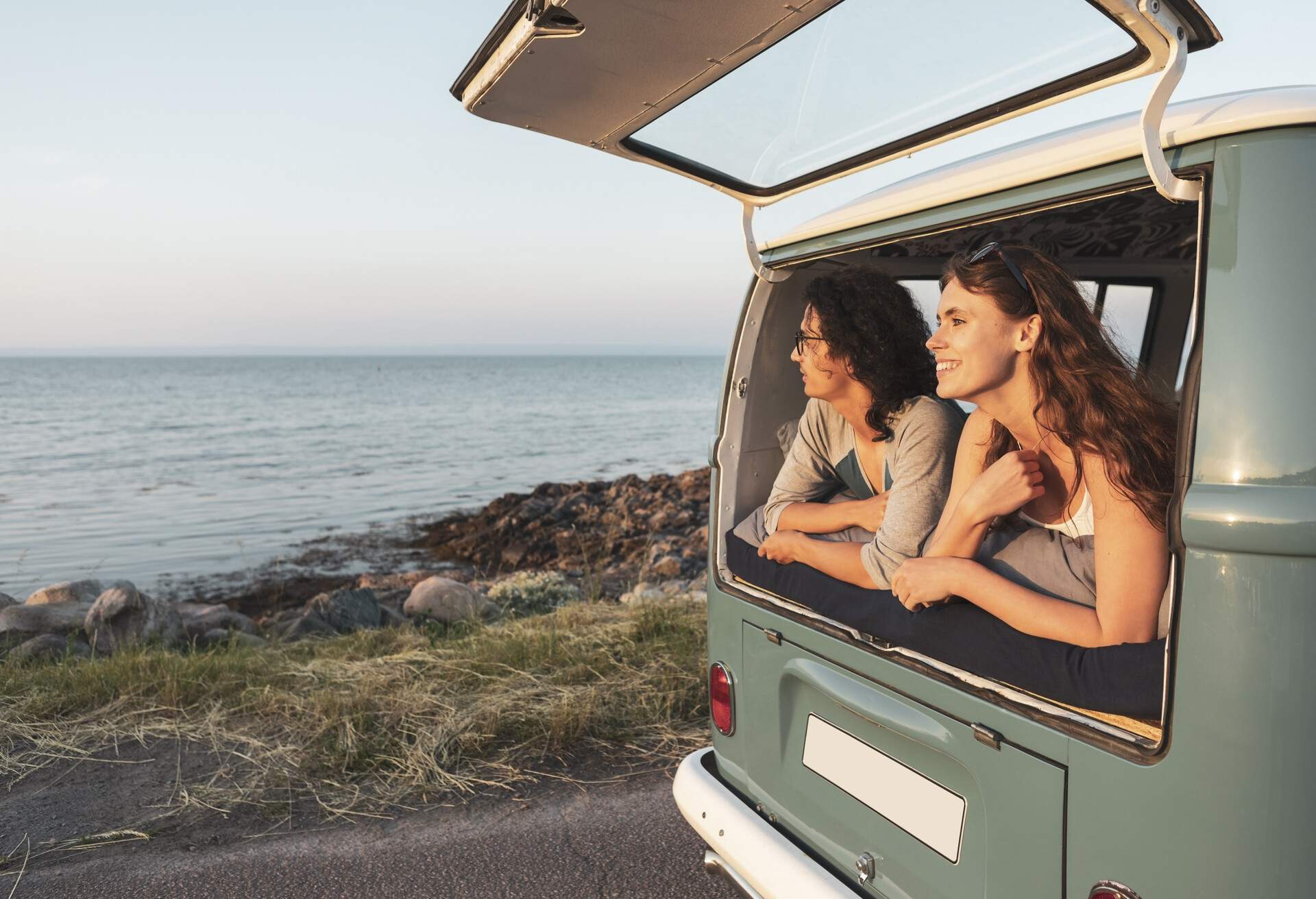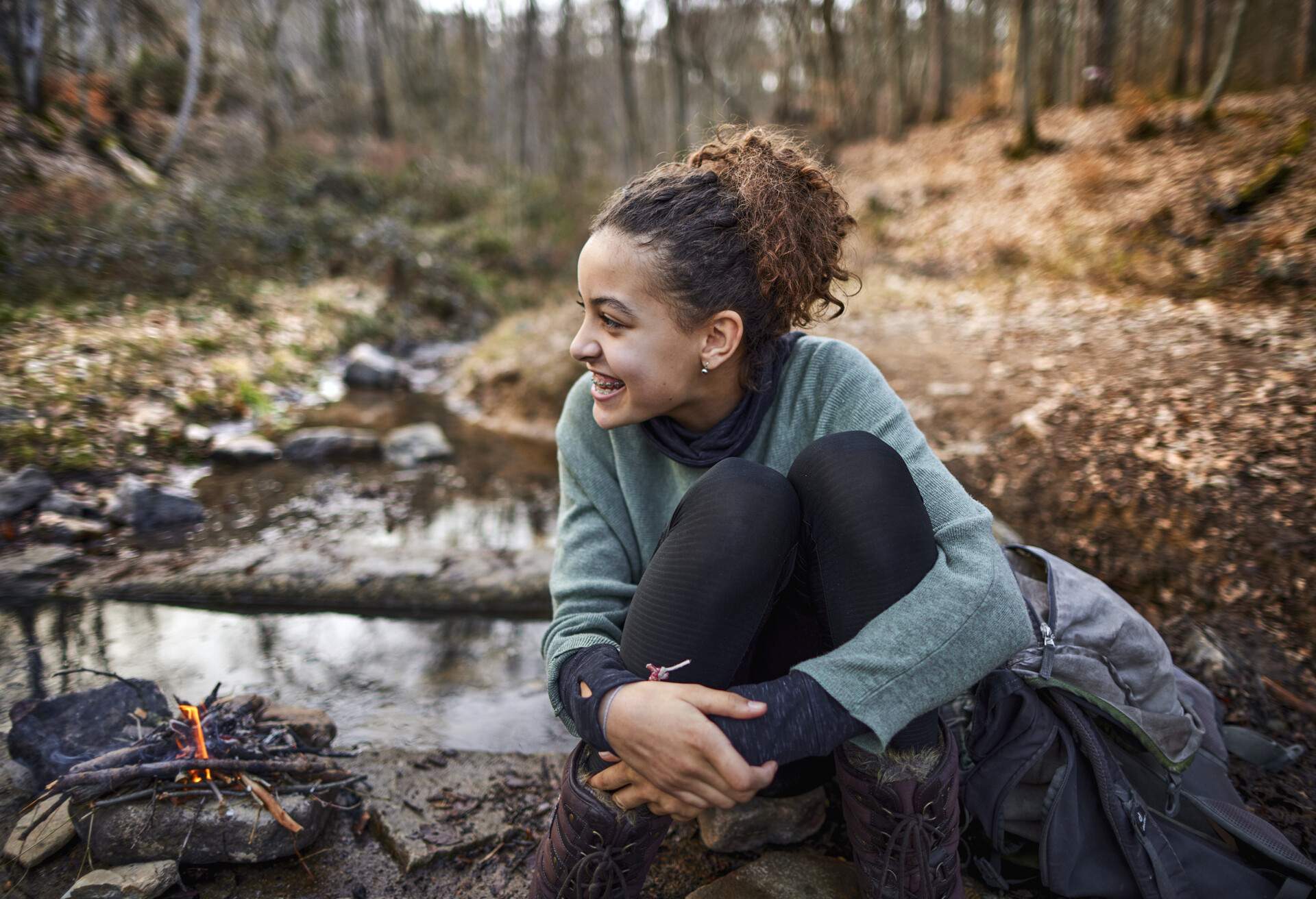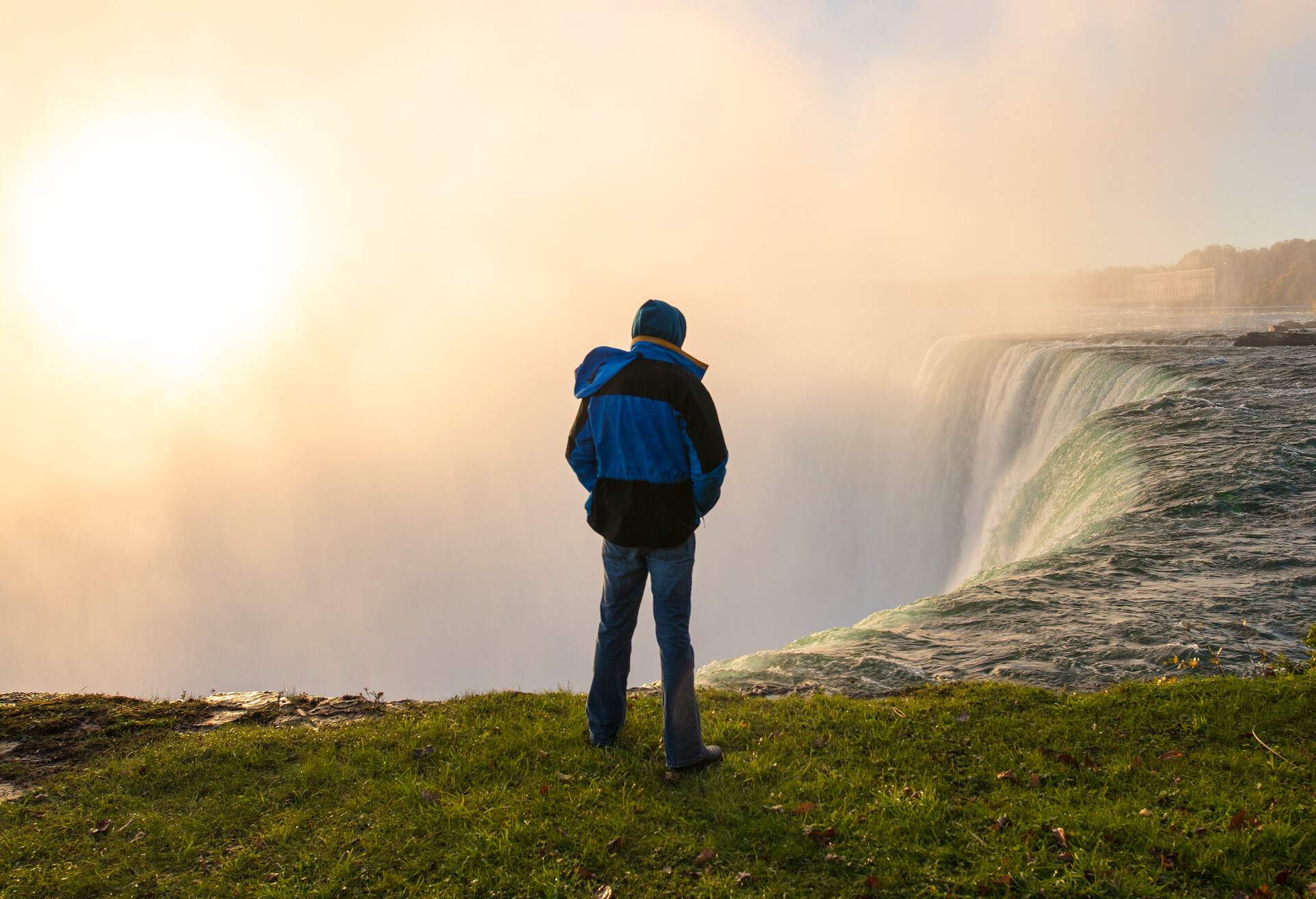Get ready for the adventure of a lifetime, with a holiday camping in Canada. From mountains and rainforests to highlands and grasslands, it’s got something for everyone.
Camping in Canada: benefits and tips
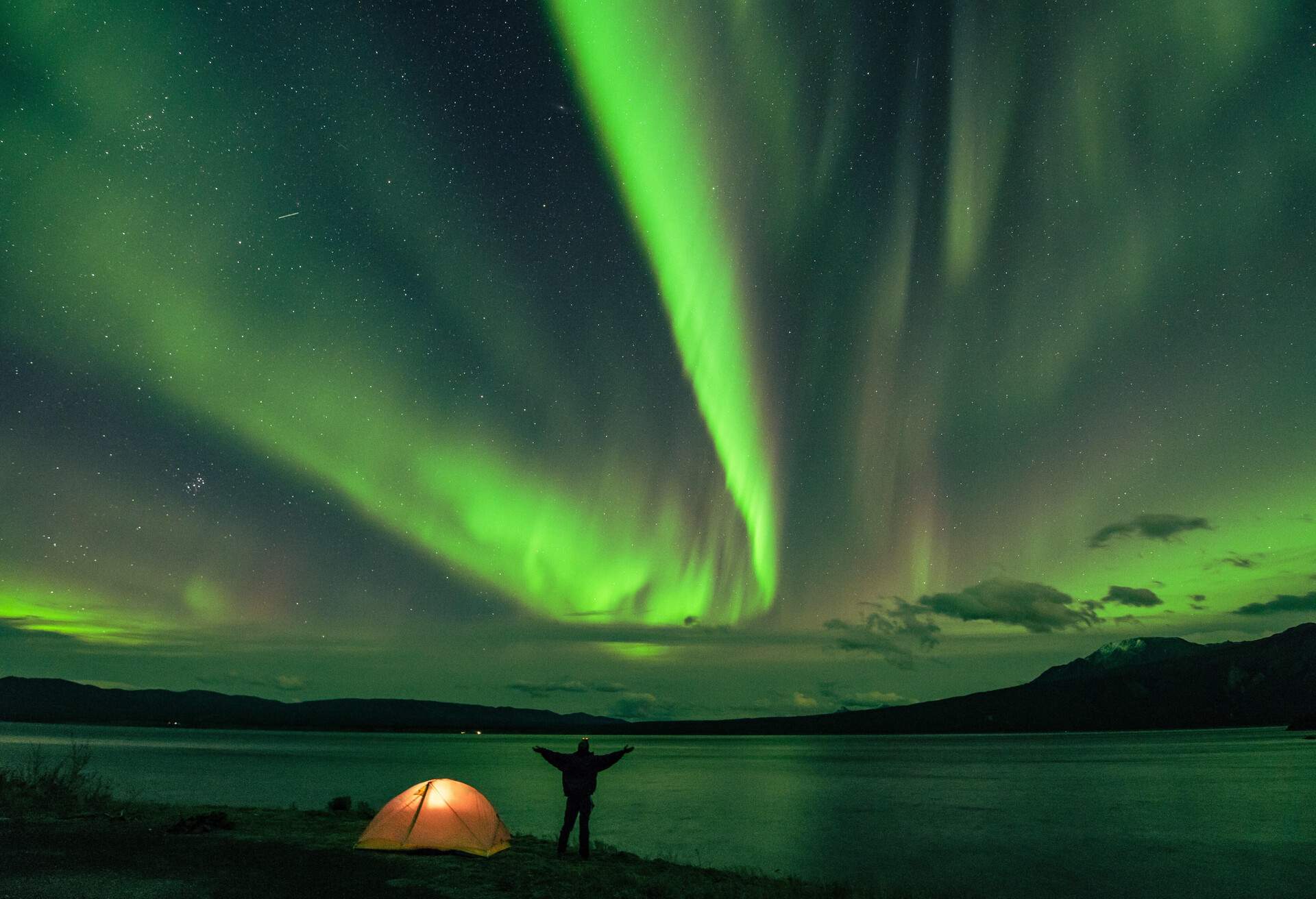
Camping in Canada is an experience that we recommend for everyone. It’s the ideal activity to re-energise your mind and body. Check out the benefits and our top tips below.
Benefits of combining camping and travel
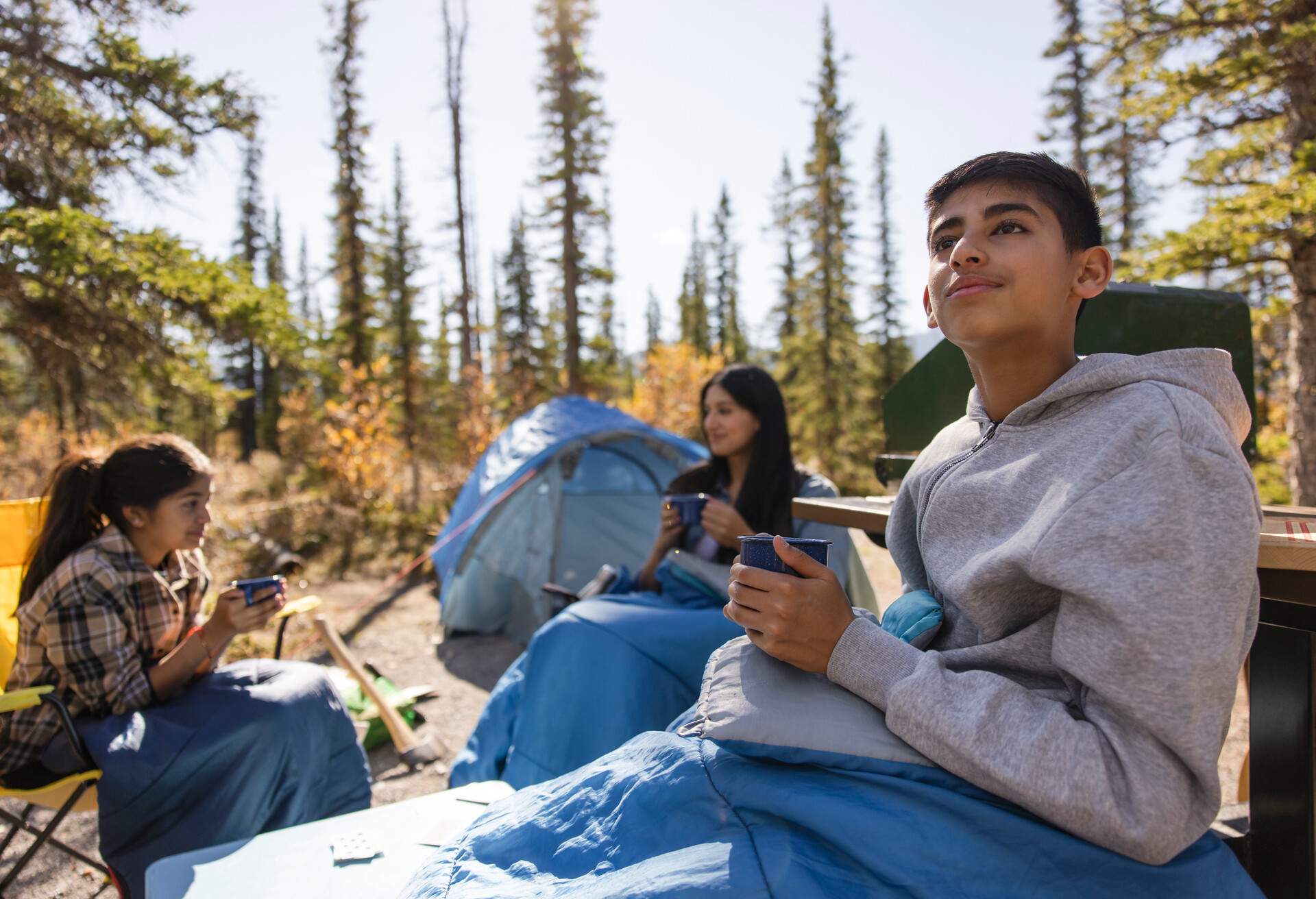
Camping is great for your mind and soul. It’s the perfect activity both individually or in groups, with it being a particularly good team-building exercise. Camping can also give you more flexibility on your travels; it’s a lower-budget option, so you can enjoy your holiday for longer. In addition, it helps you stay physically fit, reduce stress ad unplug from technology.
Practical tips
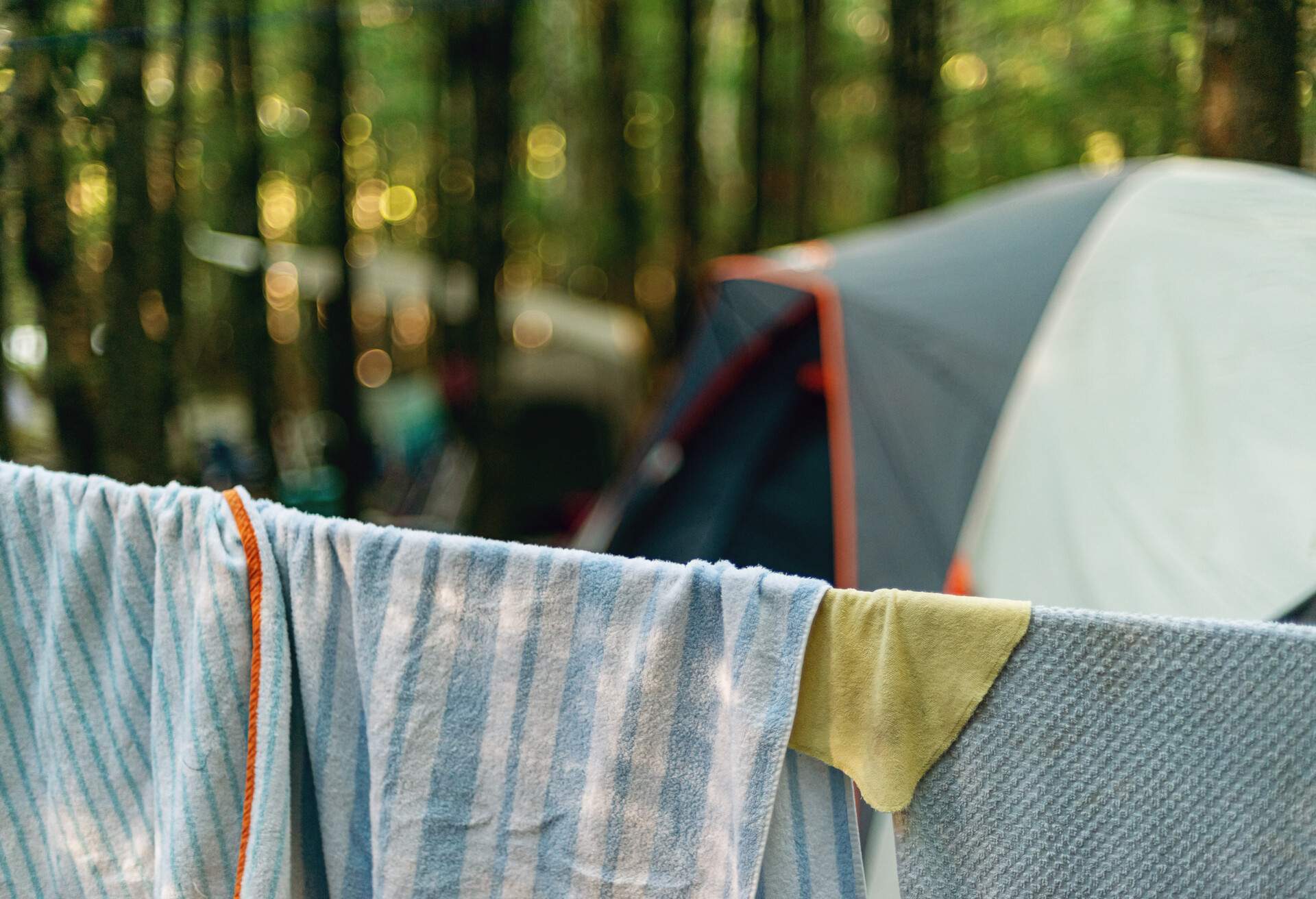
Campsites can start from as little as about C$ 25 (£18) per night in Canada, making it a great way to save during your trip. There is always the option for wild camping too, but it’s important you check the rules and regulations of the province that you’re camping in. No matter where you are in Canada, the likelihood is that you’ll be close to a water source or some mountains, so remember to bring your swimming gear and a good pair of hiking shoes. If you’re escaping to the wilderness, be sure to inform someone of your general location too, as picking up signal on your mobile phone can be hit-and-miss.
Camping in Canada: Nova Scotia
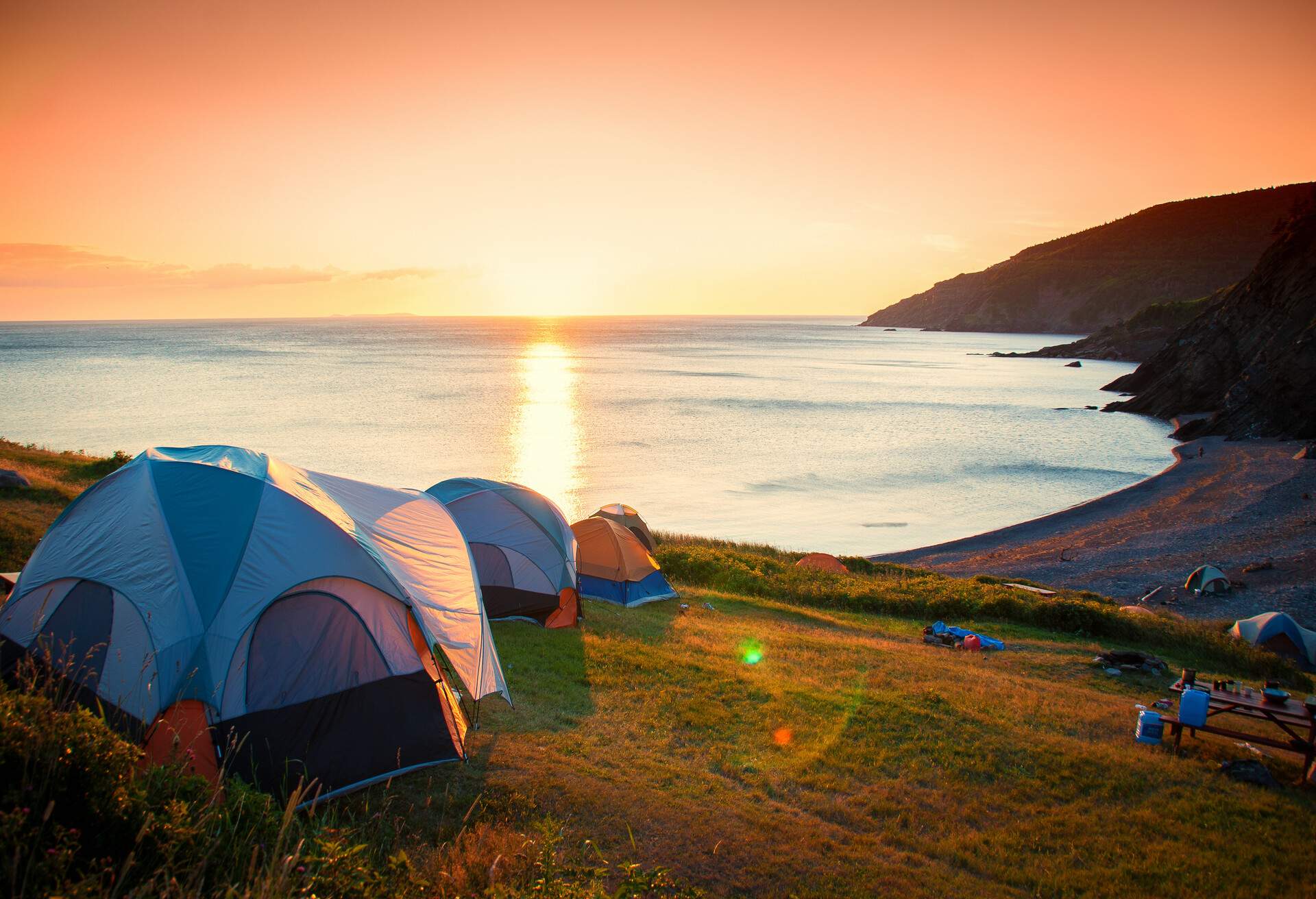
Starting in Eastern Canada, Nova Scotia offers raw beauty that will leave you wanting more. Whether it’s wild camping or a campsite you want to stay at, the decision is yours.
Why Nova Scotia is great for camping
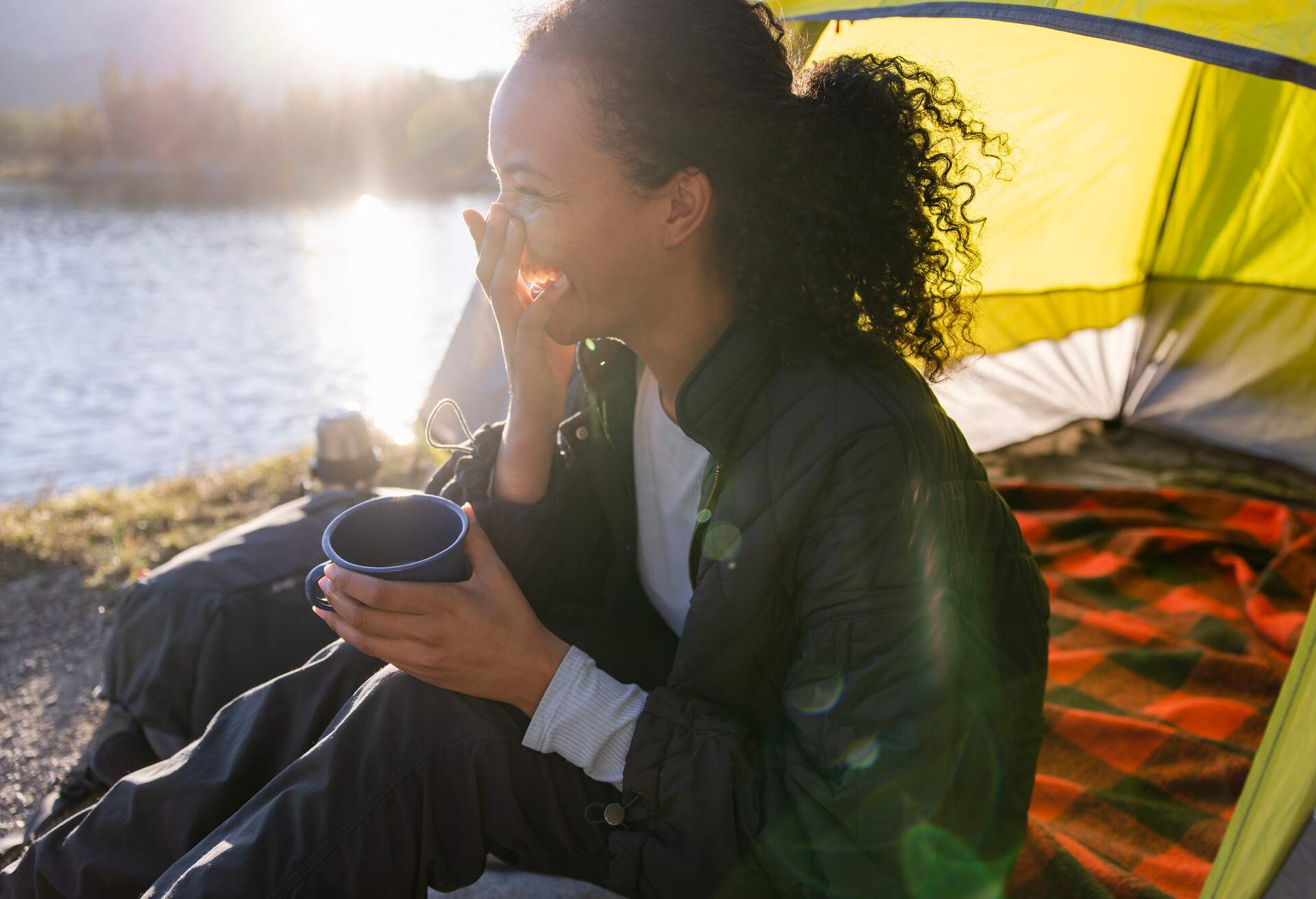
If you are looking for an unforgettable Canadian camping experience, then Nova Scotia is for you. Located in the east of the country, it’s predominantly surrounded by water. Boasting a rugged coastline, picturesque villages and stunning highlands, it’s the perfect place to pitch up for a night or two. Cape Breton Highlands National Park is one of the highlights, which offers ideal camping conditions. You can camp in Nova Scotia without a permit, but you must follow low-impact standards and guidelines to ensure minimal impact on the environment.
Where to stay: Cape Breton Highlands National Park
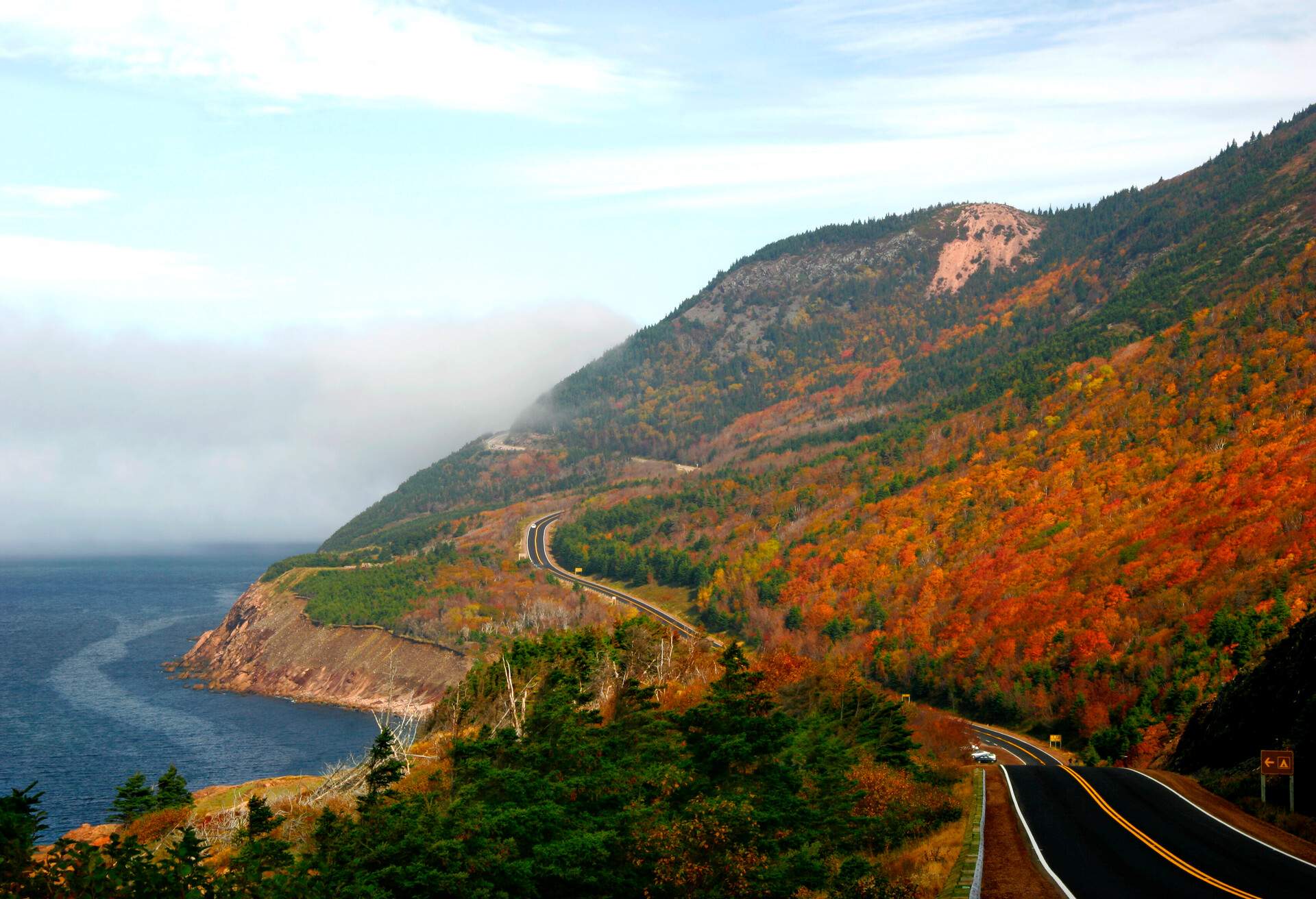
There is some great Canadian field camping in Cape Breton Highlands National Park, with Corney Brook Campsite being up there with the best. This campsite is located close to the Cabot Trail, which is a world-famous highway that offers sublime scenery. With views of the hills to the east and a beach to the west, you’ll be able to enjoy mesmerising sunsets throughout your stay. One of the best things to do whilst staying here is to head off on a hike up L’Acadien Hiking Trail, where you’ll be rewarded with superb vistas in every direction.
This 22-pitch campsite offers a kitchen shelter and campfire for cooking. There is also one washroom with flushing toilets.
Camping in Canada: Yukon
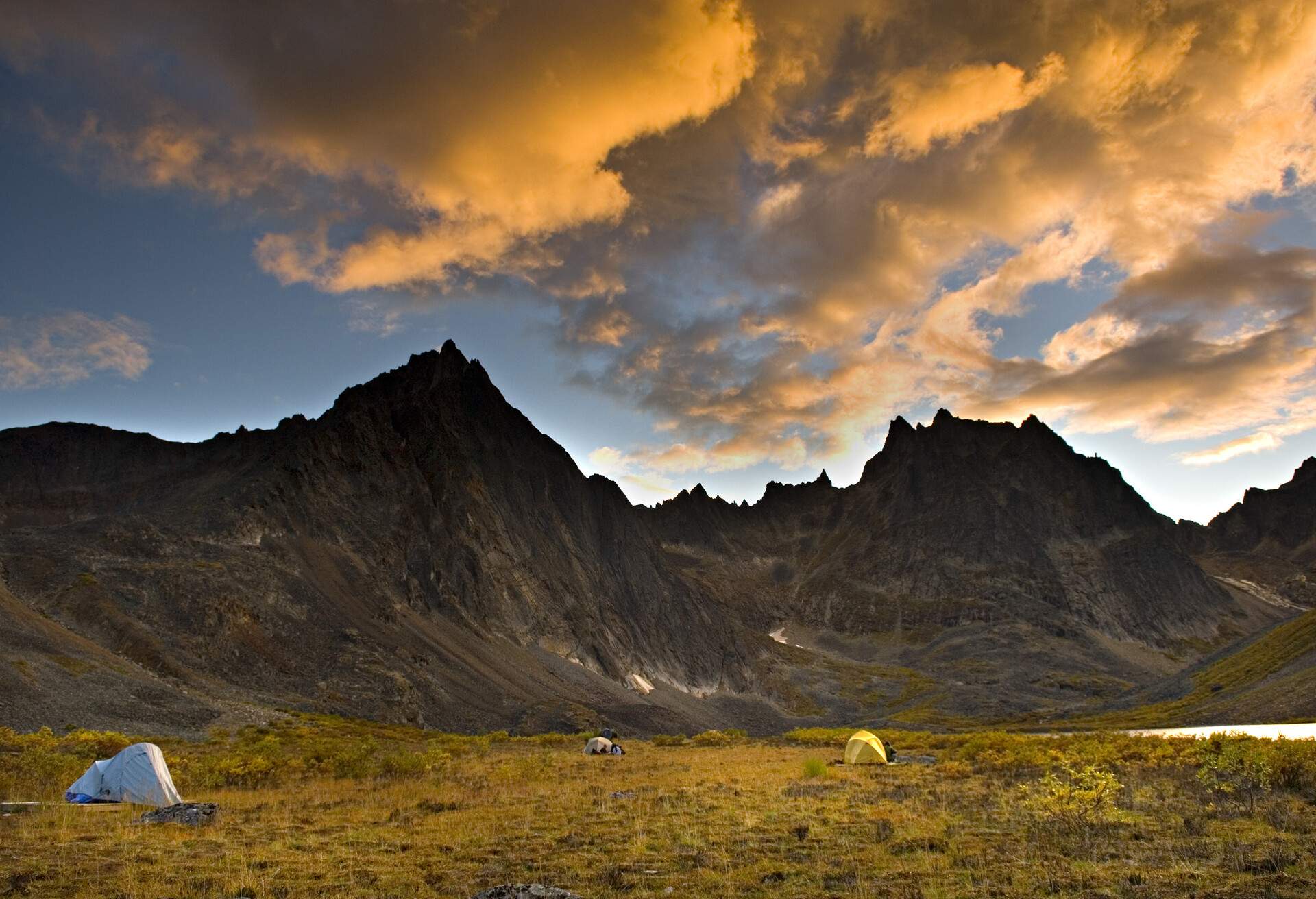
This wild territory is predominantly untouched and an epic place to spend a few nights under the stars. Soak up the scenery and get close to wildlife in this amazing province.
Why Yukon is great for camping
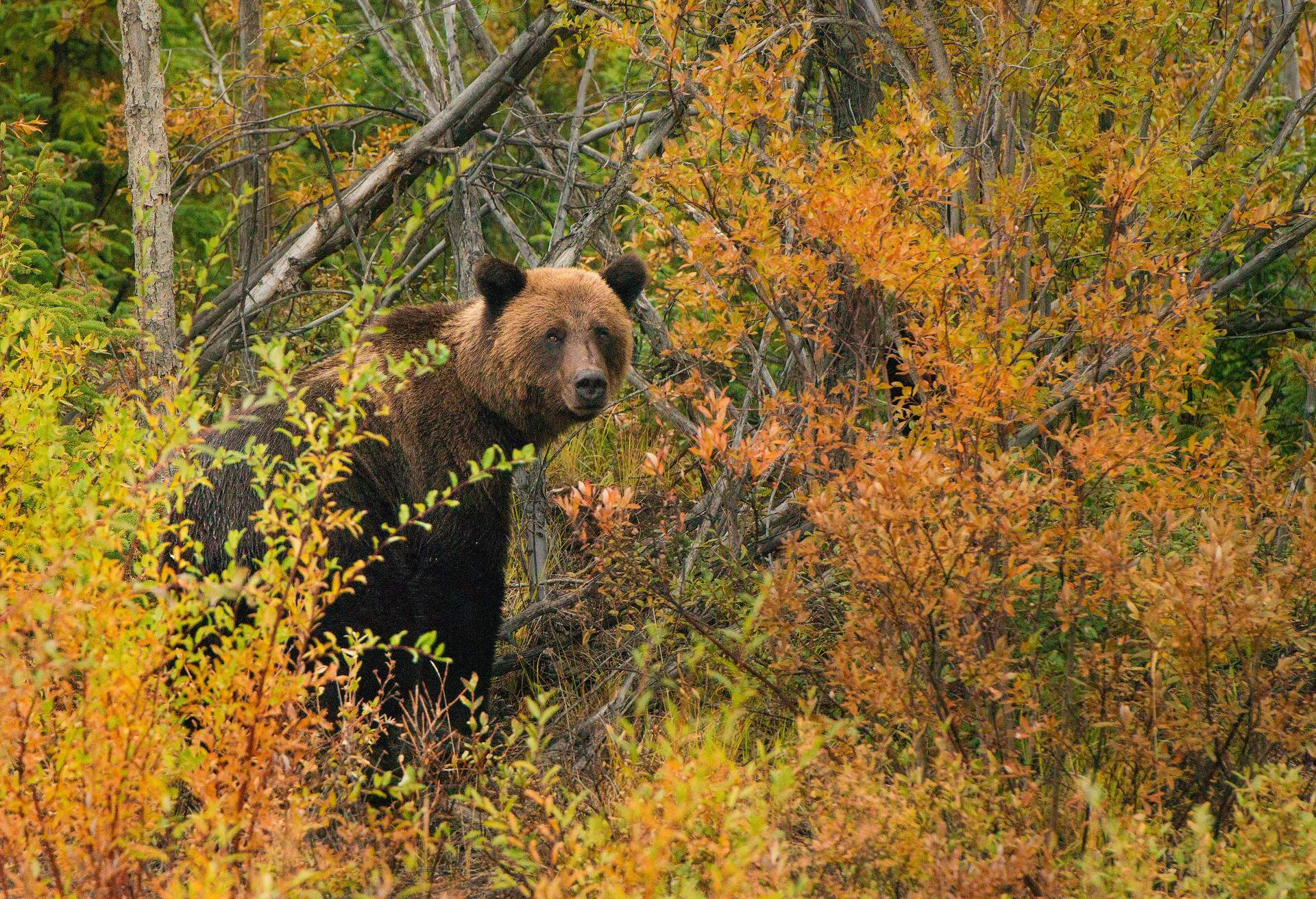
Located in the northwest of Canada, Yukon is a wild and mountainous territory that will bring you closer to Mother Nature. Boasting Kluane National Park and Reserve, you’ll be able to enjoy the highest peak in Canada, Mount Logan, as well as glacier trails and the Alsek River. With a range of wildlife on offer, such as grizzly bears and more than 100 species of bird, it’s a far cry from the sprawling urban cities in the country. Camping here requires a permit between April 1st and November 15th, whilst you must also use approved bear-resistant food canisters throughout your trip.
Where to stay: Kluane National Park
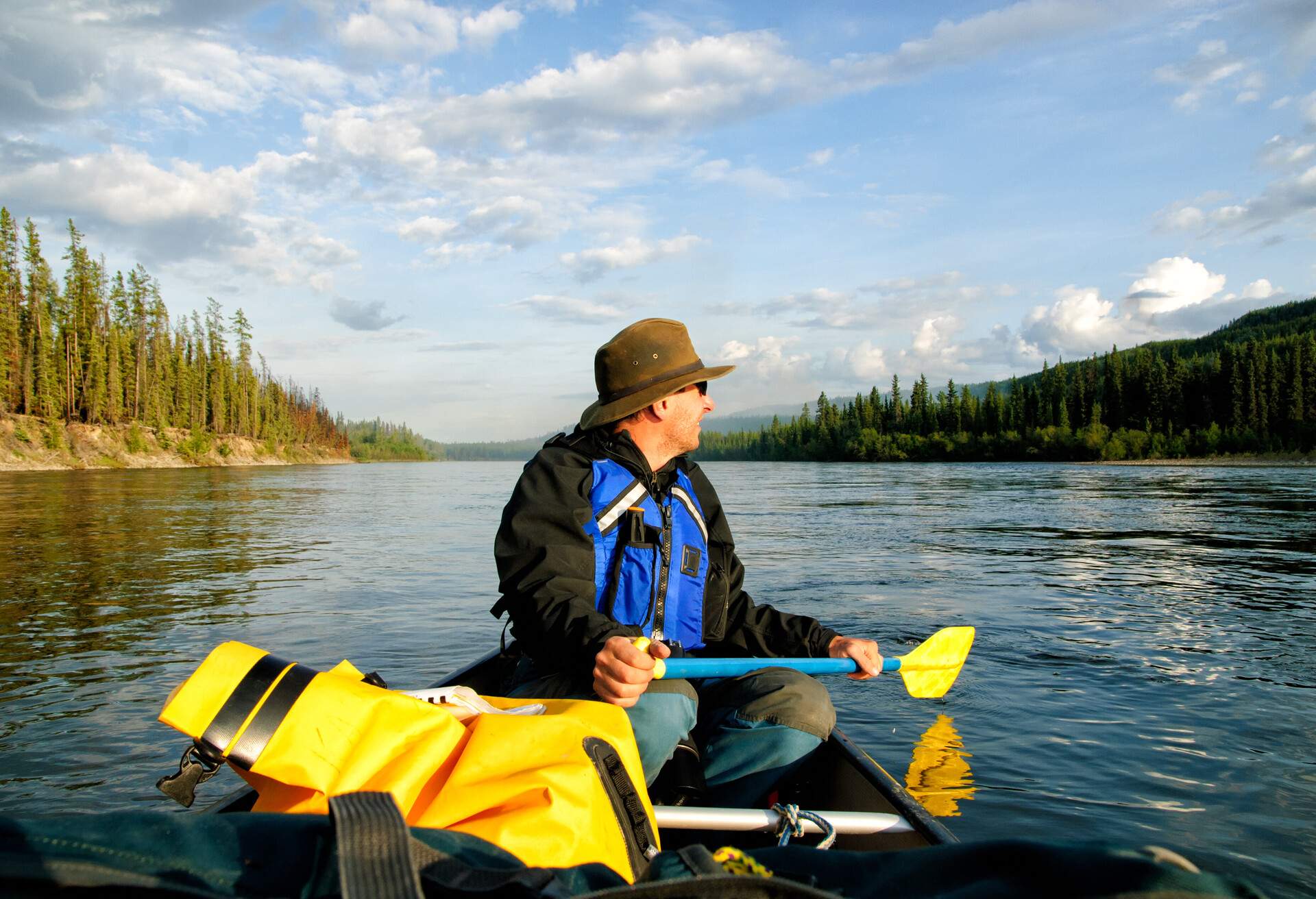
One of our favourite places for camping is Kathleen Lake Campground. Surrounded by great hiking trails, kayaking spots and fishing zones, it’s the perfect place to reconnect with nature. For superb views, the King’s Throne Summit hike will take you to a peak above Kathleen Lake. If you’ve taken your mountain bike with you, then you can go on a cycle to Marsh or Alsek lakes, whereas those who want a more extreme adventure should try out whitewater rafting with one of the local companies.
A 38-pitch site, you’ll be able to make use of drinking water, firewood and bear-proof storage. Campfires are permitted in established fire pits. For cooking, you can use the kitchen shelter, and there are unisex toilets too.
Camping in Canada: Saskatchewan
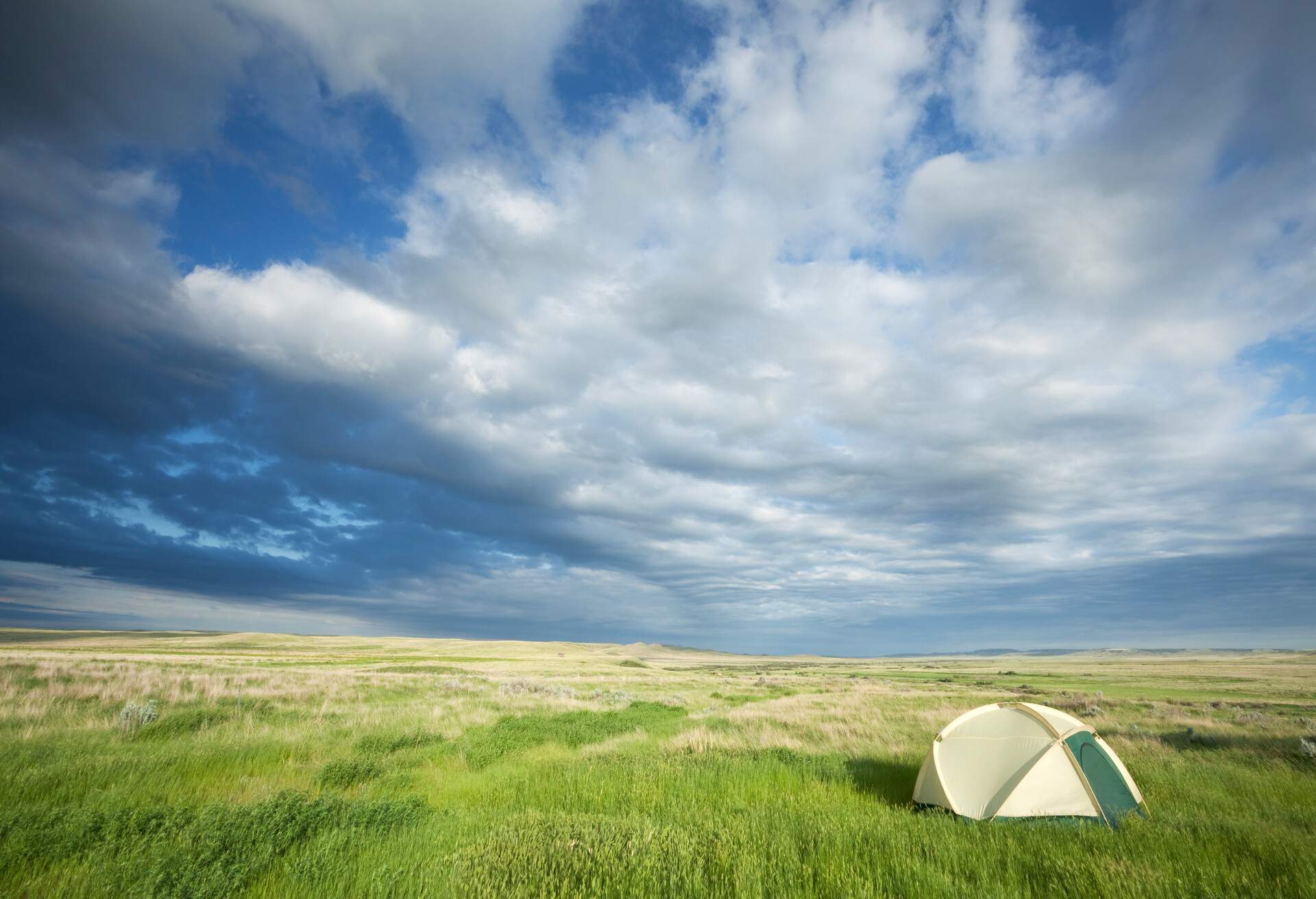
Saskatchewan leaves nothing to be desired, with its diverse landscape likely to captivate you from the moment you set eyes on it. Find out more about camping in this province below.
Why Saskatchewan is great for camping
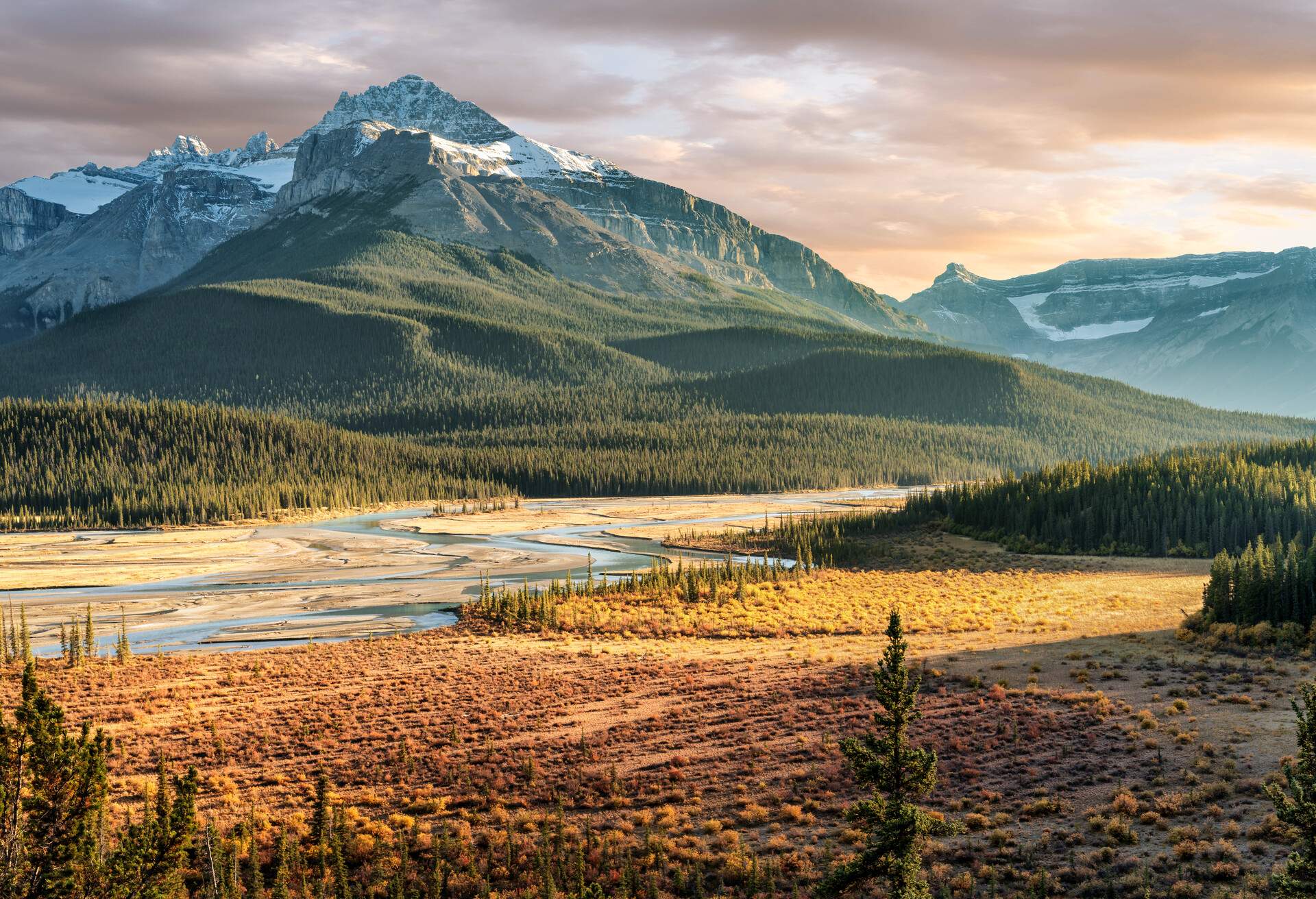
Saskatchewan is another province that is perfect for camping in Canada. With grasslands covering most of the southern plains and rugged rocks covering the north, Saskatchewan provides a diverse environment that is perfect for campers who want to get back to basics. In general, you should use a designated campsite in Saskatchewan, as wild camping is only permitted in certain zones.
Where to stay: Grasslands National Park
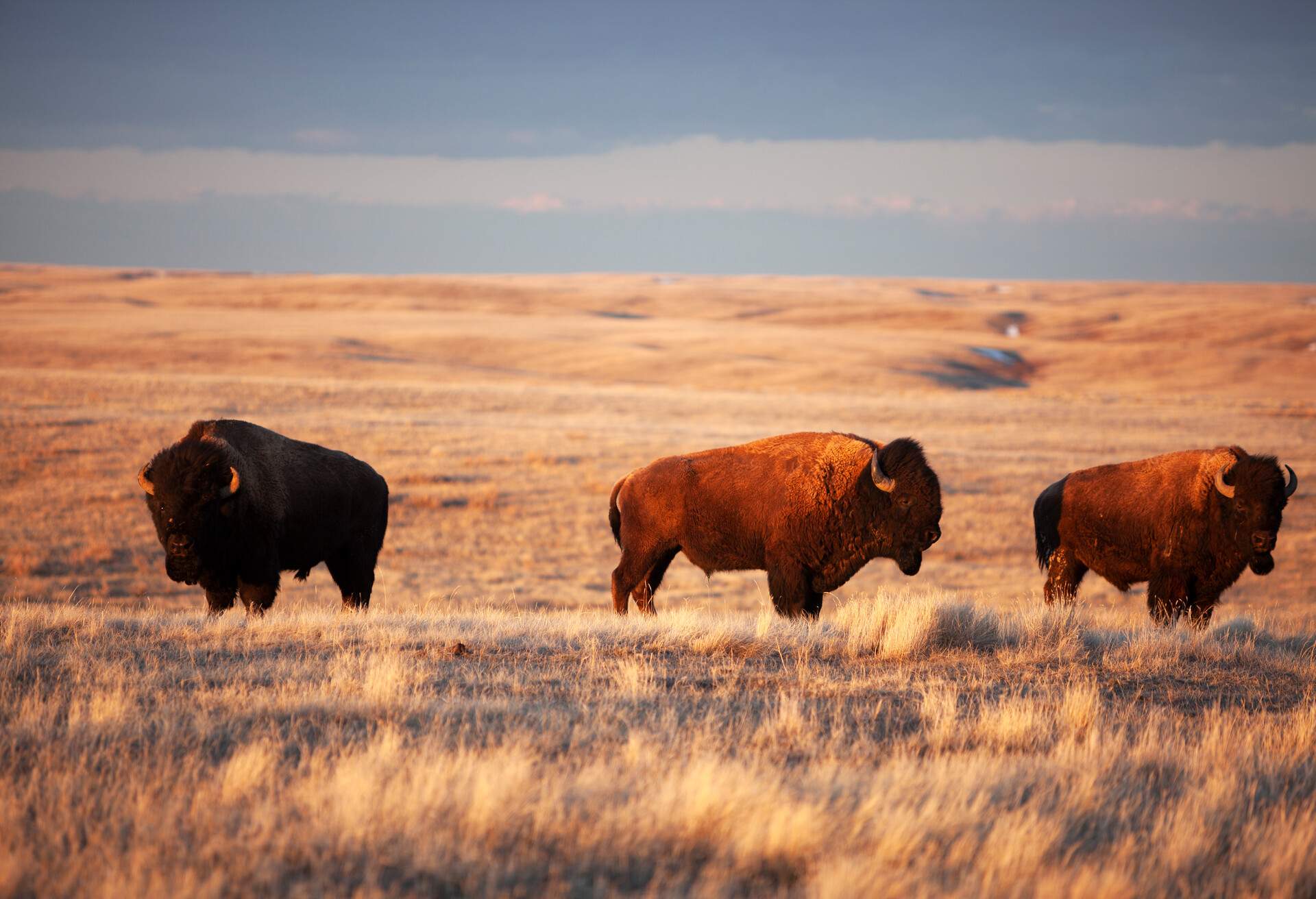
A great location to spend a few nights under the stars is Grasslands National Park, which offers you a feeling of how it was to live in years gone by. With miles of prairie land resembling its original form – that of valleys and wild short-grass hills – you’ll be able to see bison and other animals roam freely across the terrain. Frenchman River Valley Campground is a lovely place to stay, with it offering stunning viewpoints and cover from the wind. The campsite is located just off of the established hiking trails too, so there are plenty of places to go exploring during your stay.
This campsite offers powered pitches, some of which are accessible to those with disabilities. You can also make use of fire pits and picnic tables for eating. There is access to drinking water as well as unisex toilets.
Where to stay: Athabasca Sand Dunes National Park
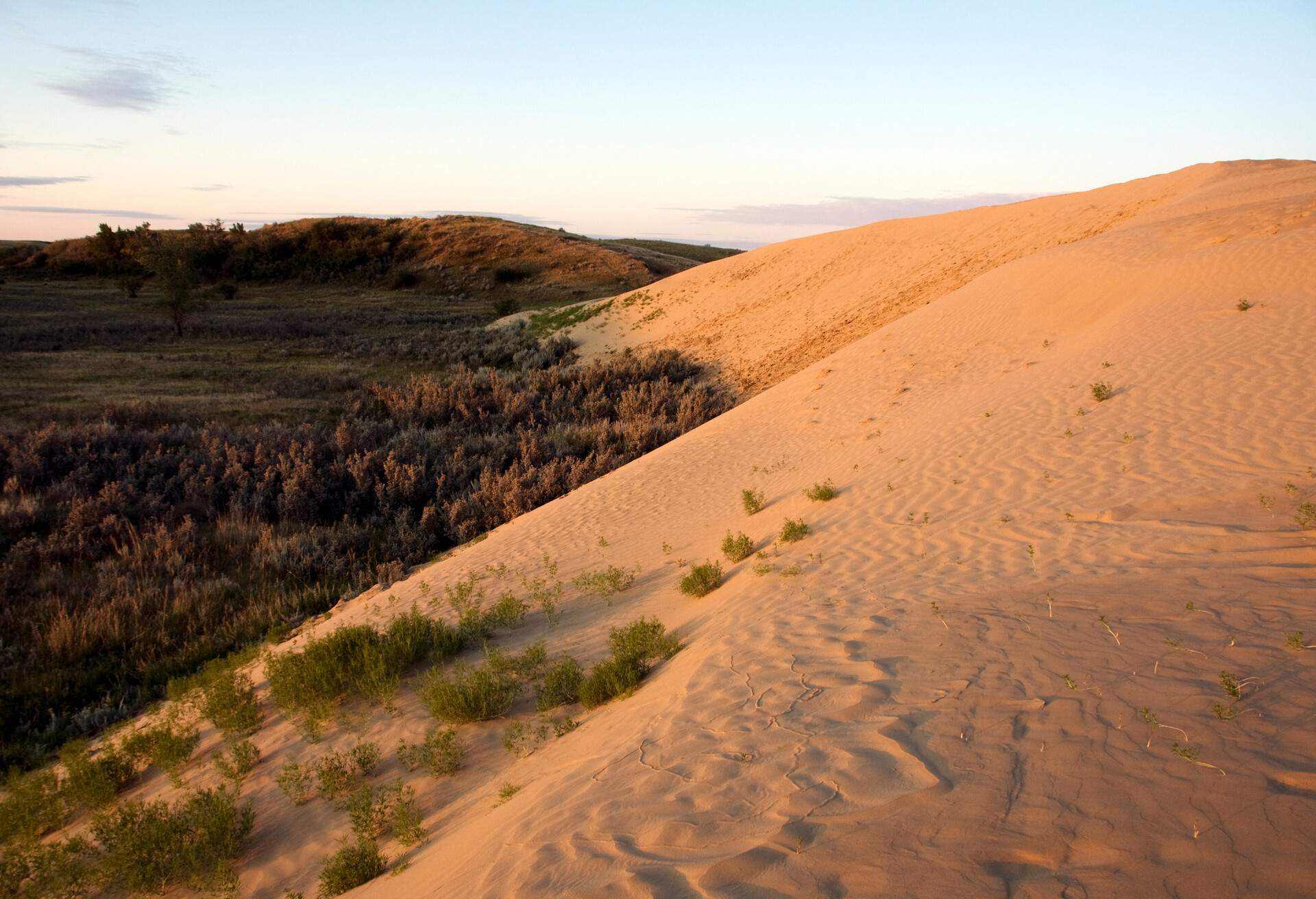
Another gem in Saskatchewan is Athabasca Sand Dunes National Park, which is only accessible by boat or float plane. Wild camping is permitted in this national park, provided you follow the low-impact standards to minimise disruption to local habitats. Due to this being a full-on wilderness experience, it’s suggested that only seasoned campers go for this off-grid experience.
Camping in Canada: British Columbia
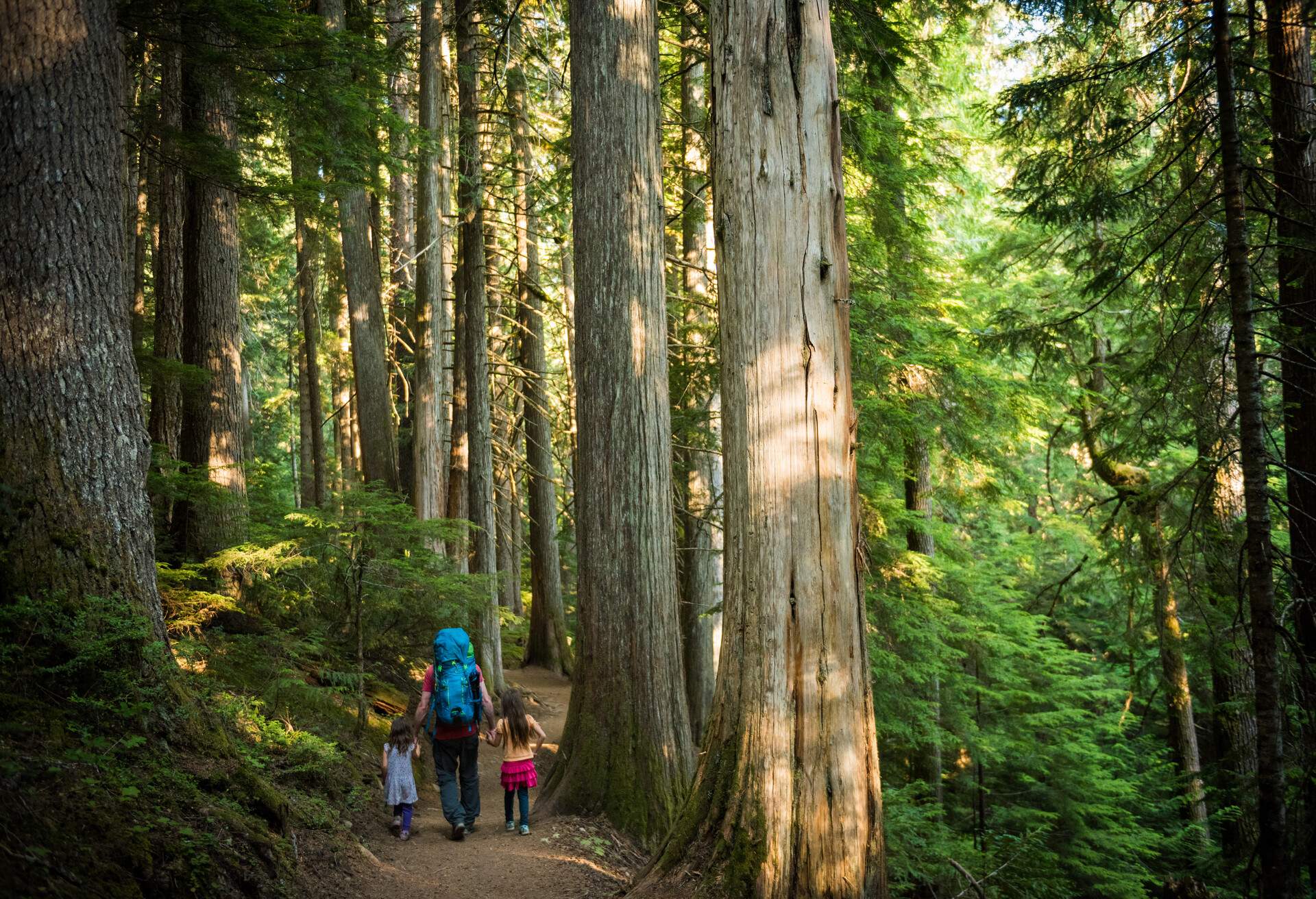
One of the most popular provinces in Canada, British Columbia never fails to impress. From rainforests to mountains, it has something for everyone.
Why British Columbia is great for camping
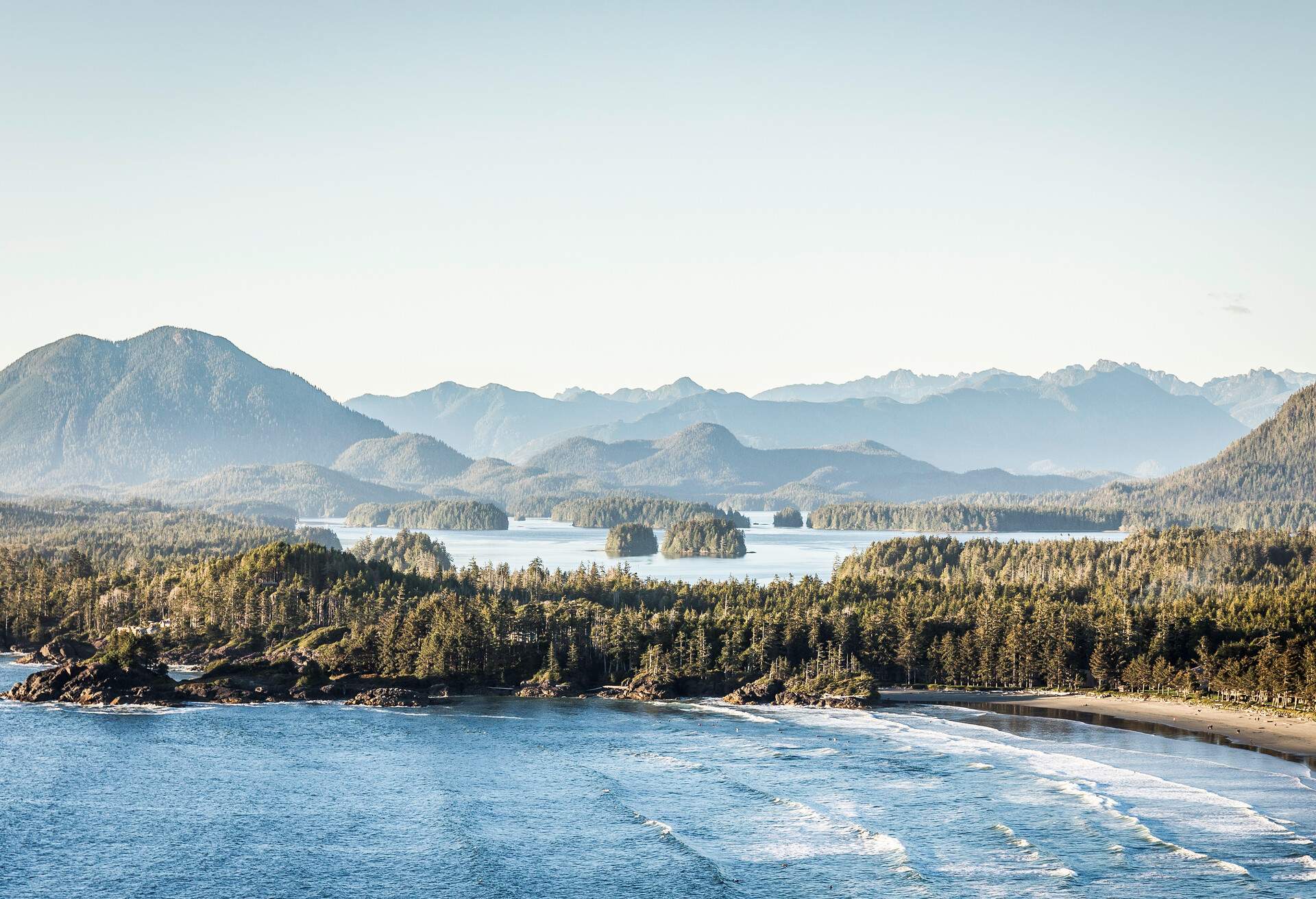
When it comes to camping in Canada, British Columbia is one of the most popular provinces to visit. The westernmost part of Canada, it’s defined by its Pacific coastline and mountain ranges. Some parks allow wild camping, whilst others do not, so be sure to check before you travel to ensure you’re adhering to the local laws.
Where to stay: Pacific Rim National Park
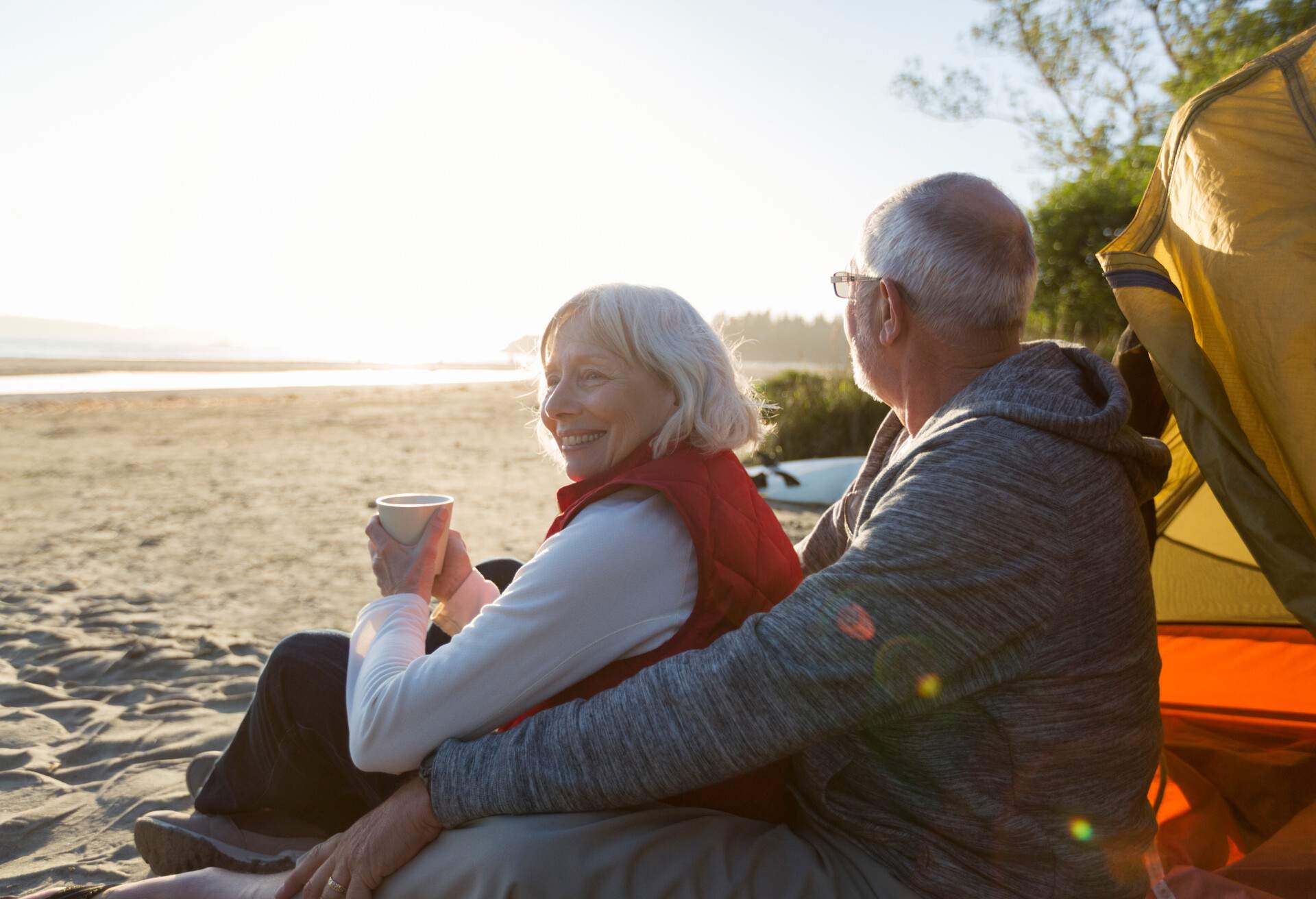
One of our favourite options for camping in British Columbia is Green Point Campground in Pacific Rim National Park. Wild camping isn’t allowed in this park, so it’s advisable to make a reservation in advance. Boasting lush rainforest, stunning beaches and a plethora of wildlife, Pacific Rim National Park has something for everyone. The campsite offers stunning views out to the ocean, with the sound of the waves crashing providing the perfect soundtrack to drift off to sleep every night.
This is the ideal site for anyone who wants to practise their surfing skills too; although, it’s worth noting that the water is cold, so a wetsuit is needed. During the summer months, you can also go grey whale spotting, whilst the walking trails are the perfect way to unwind during your holiday.
There are 20 pitches available at this campsite, with electricity an option for all. You can also make use of toilets and showers on site.
Camping in Canada: Alberta
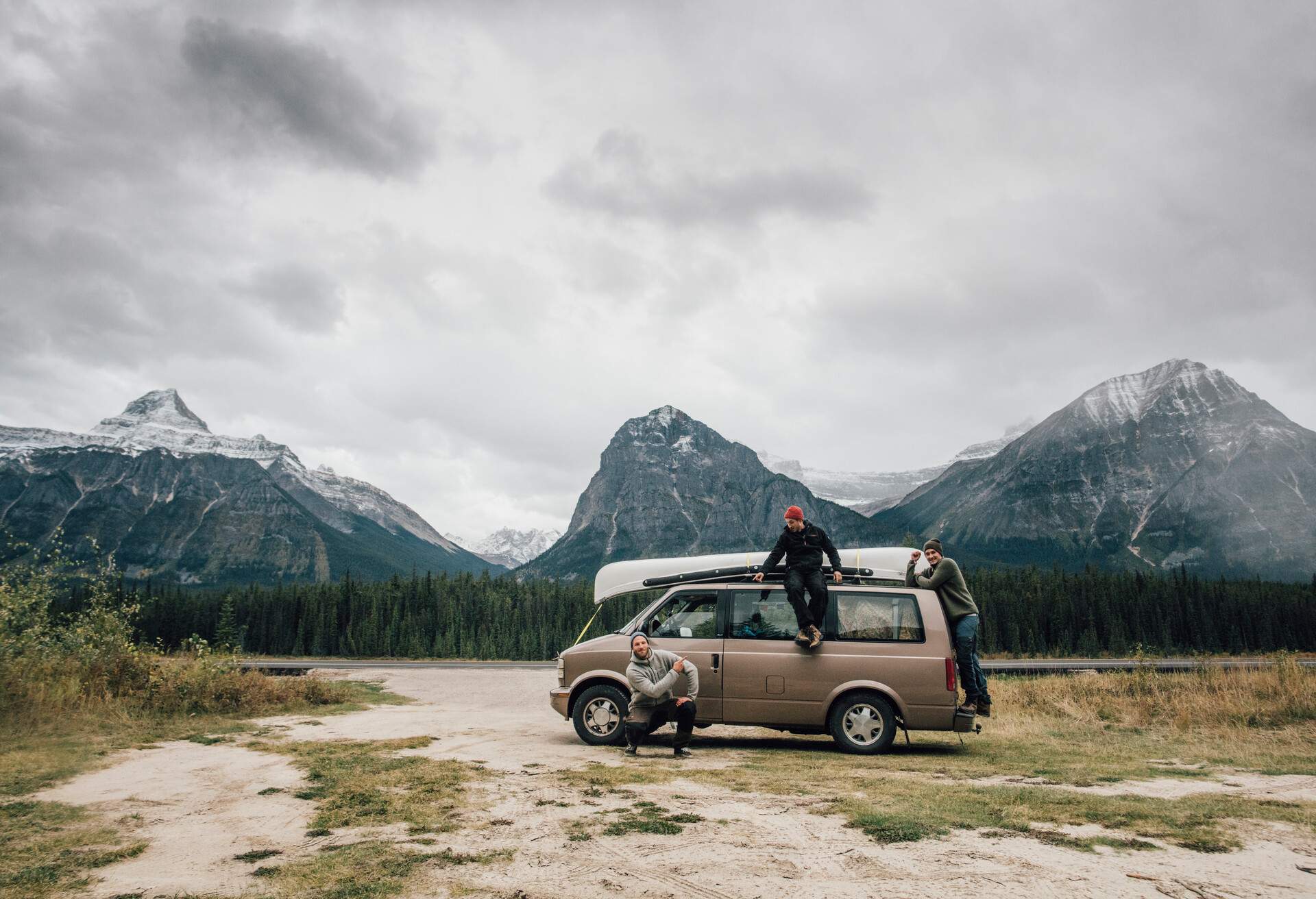
Known for its winter sports offering, Alberta is just as good for campers. A wild camper’s dream, you can pitch up across most of the province.
Why Alberta is great for camping
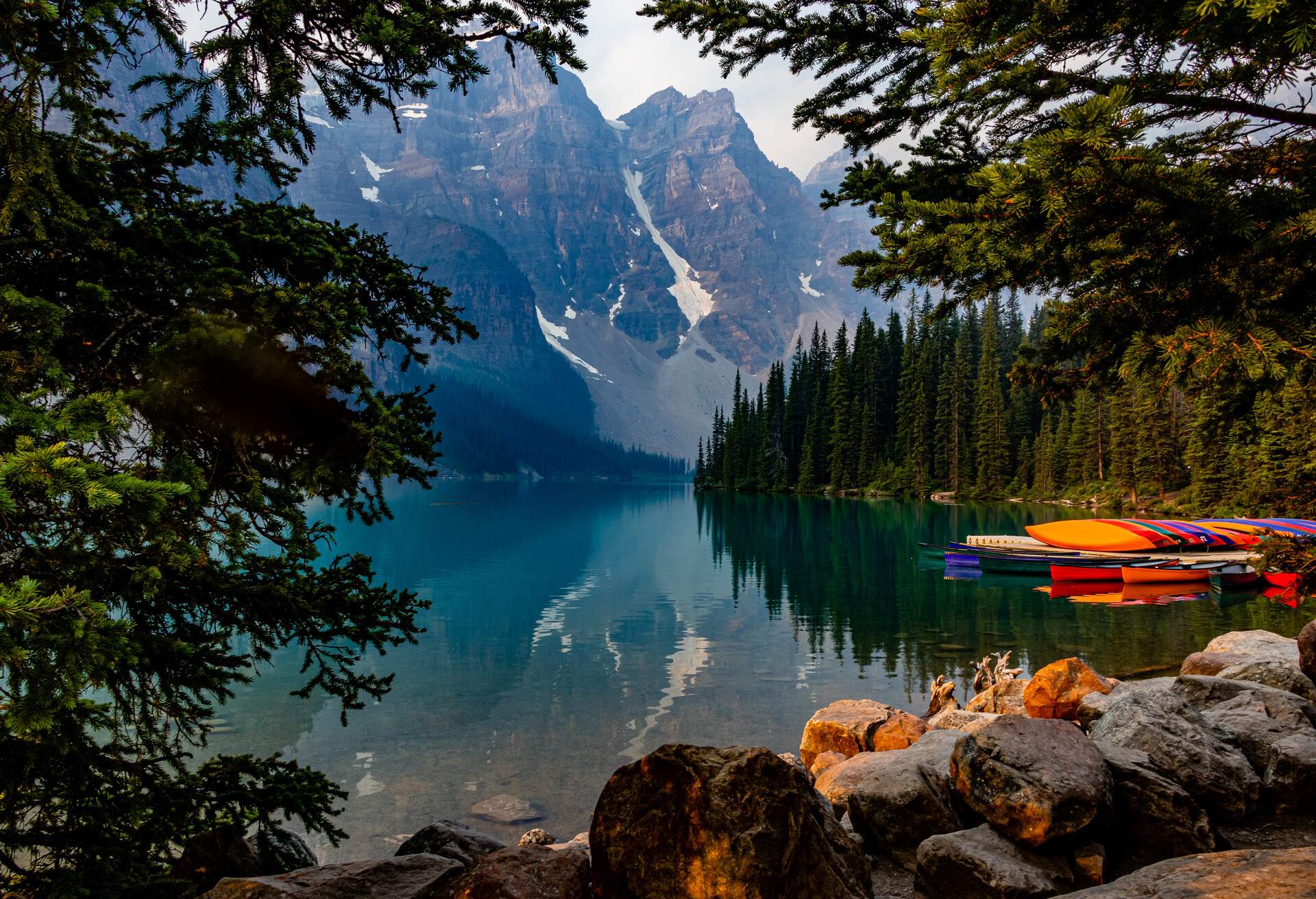
One of the reasons that Alberta is great for camping in Canada is that wild camping is permitted in provincial parks; although, you can’t stay within 1 km (0.6 miles) of an official campsite. Offering a diverse landscape that encompasses mountains, deserts, forests and prairies, adventurers will never feel more at home in a tent than they do here. With lakes for kayaking and mountains for hiking, it’s an ideal place to rewild yourself away from the hustle and bustle of your everyday life.
Where to stay: Waterton Lakes National Park
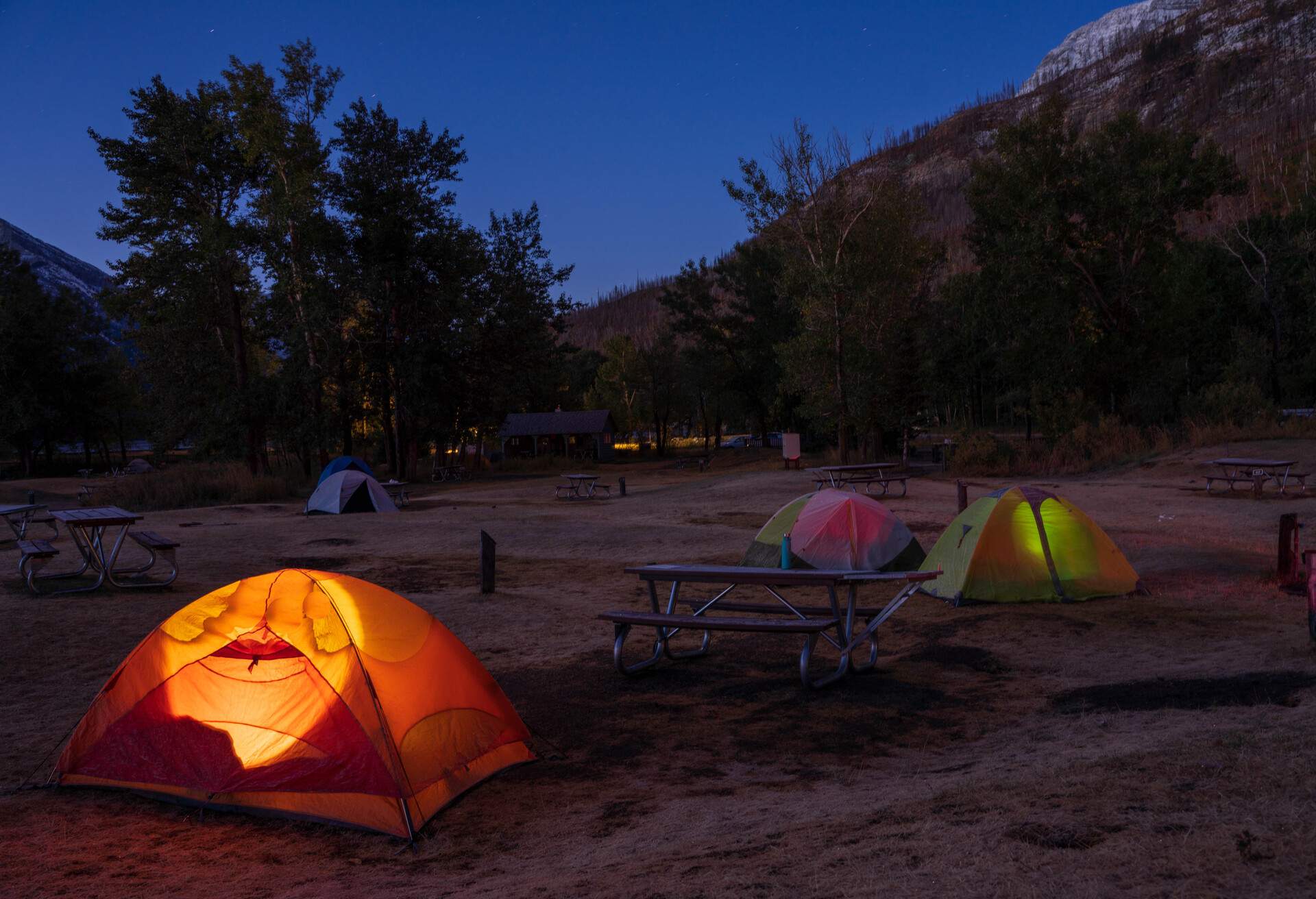
Whilst you can wild camp here, our top campsite is Townsite Campground in Waterton Lakes National Park. Located in the middle of a village on a grass field, you’ll be able to enjoy a range of organised activities nearby. In addition to that, unlike many of the campsites previously mentioned, you can enjoy the benefits of local restaurants that are only a stone’s throw away. Our top tip here is to take a bus to Cameron Lake, where you can go on a hike to Carthew Ridge for great views.
This campsite has the lot, from basic on-site facilities like toilets and showers to a more advanced offering like wi-fi and electricity. Nearby, there is a range of amenities for you to take advantage of.
Camping in Canada: Manitoba
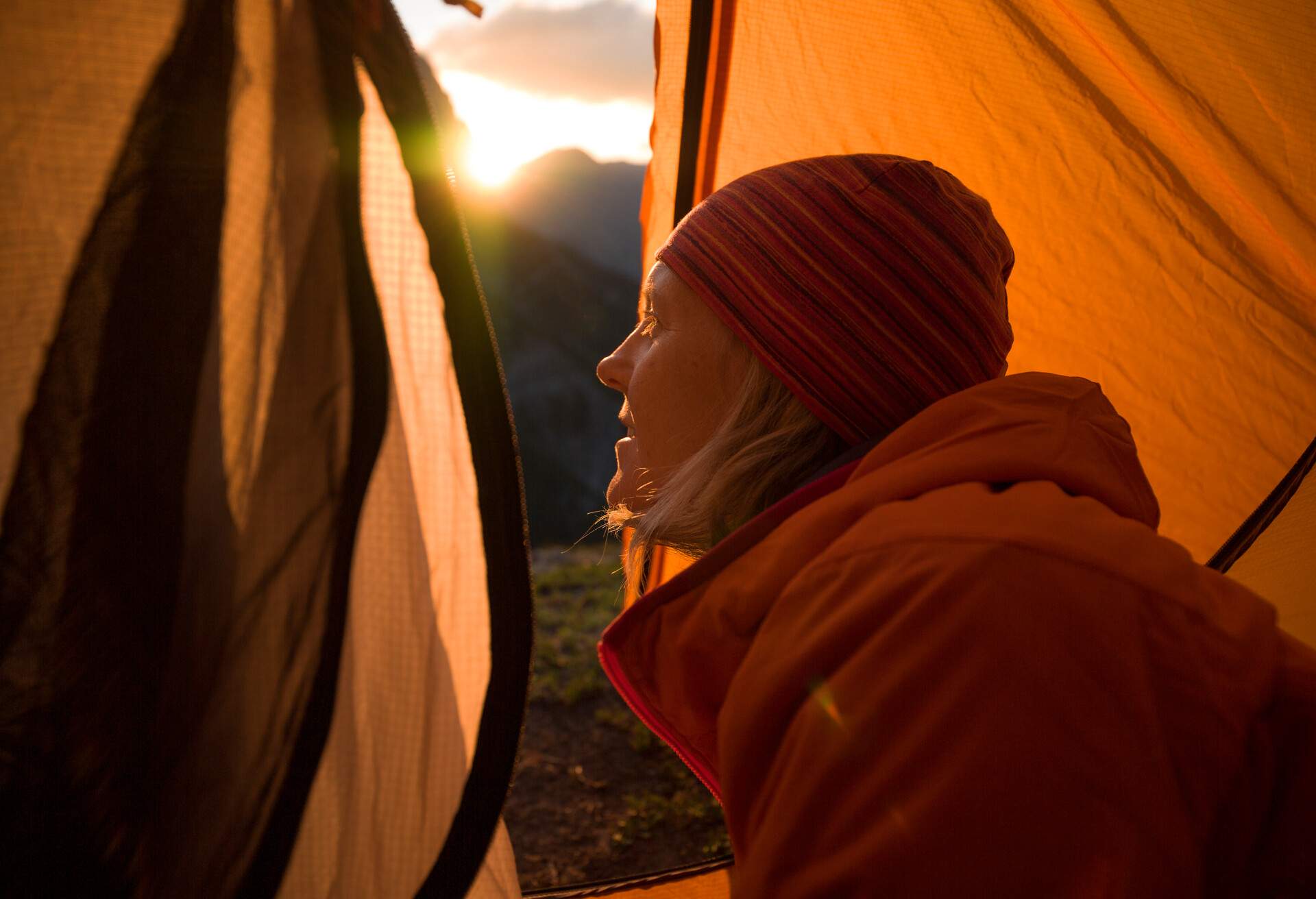
Another province that permits wild camping in most areas is Manitoba, where you’ll be able to enjoy stunning, untouched scenery in style. Find out more about Manitoba here.
Why Manitoba is great for camping
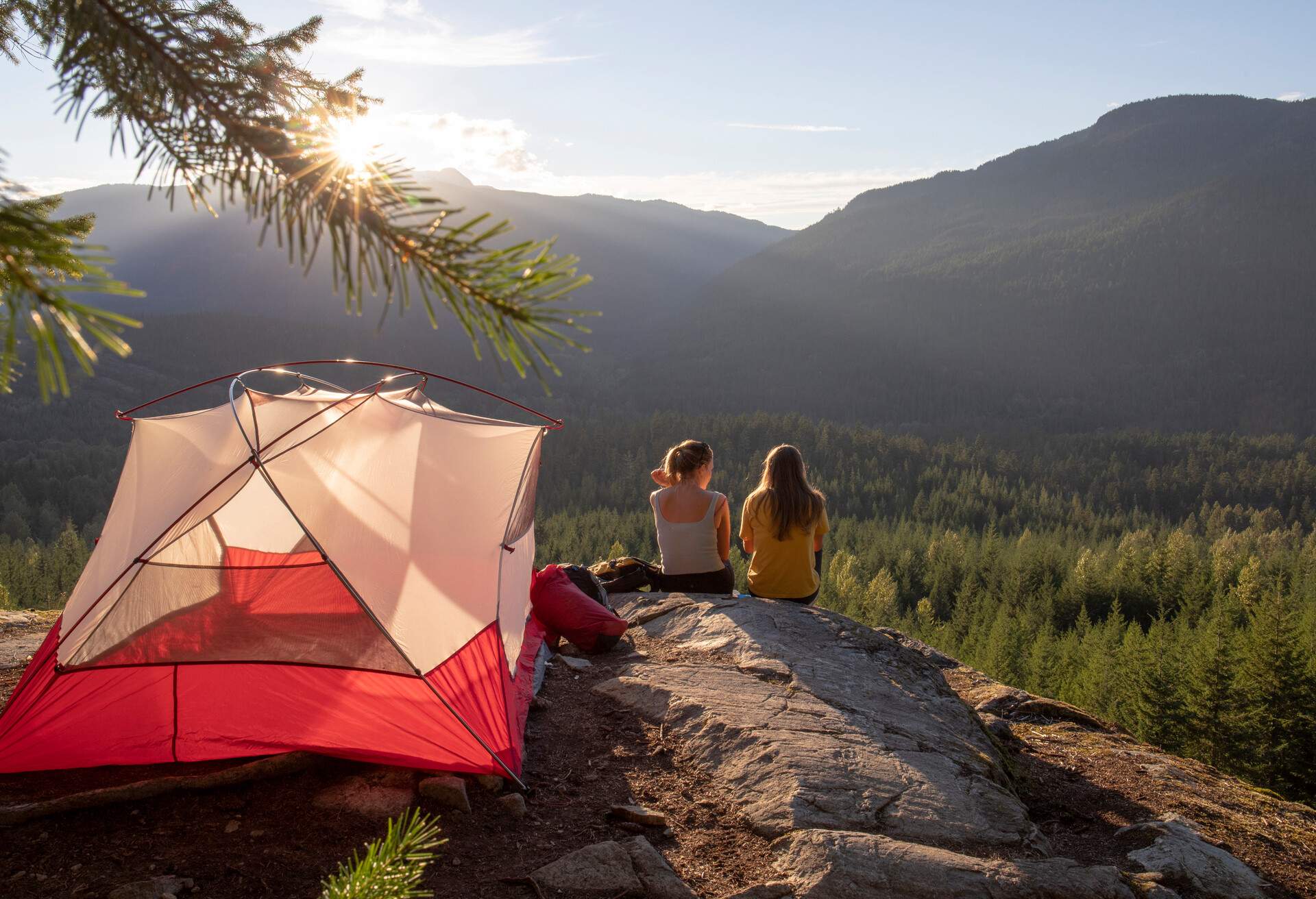
If you’re looking to enjoy a night or two under canvas, then Manitoba is ideal, as it permits wild camping on most public land. Offering mountains, lakes, rivers, forests and prairies, it’s one of the most diverse provinces to enjoy the great outdoors. Much of the wilderness is protected too, so you’ll get to see some beautiful wildlife during your travels.
Where to stay: Nopiming Provincial Park
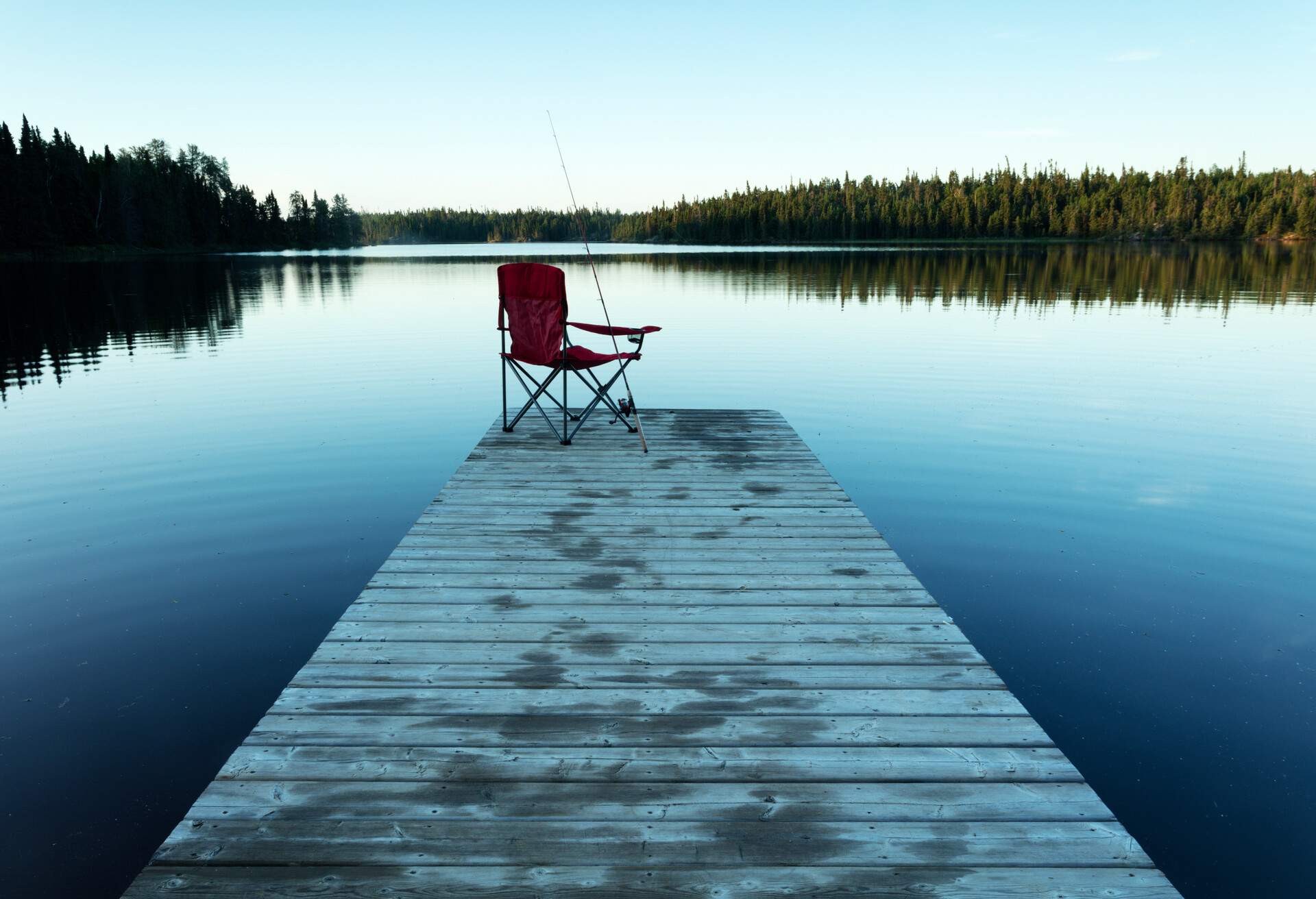
Nopiming Provincial Park is home to Tulabi Falls Campground, which is the perfect place to visit if you want to take on one of the many river routes in your canoe. From caribou and moose to wolves and other wildlife, it’s another of Canada’s true gems. This campsite also boasts its own private beach on the Bird River canoe route, so you’ll have easy access to the water. Take a fishing rod with you and see if you can catch a pike, bass or walleye.
This beachside campsite has disabled access, washrooms and refuge disposal. There is also a car park, fish cleaning area and communal seating zone.
Camping in Canada: Ontario
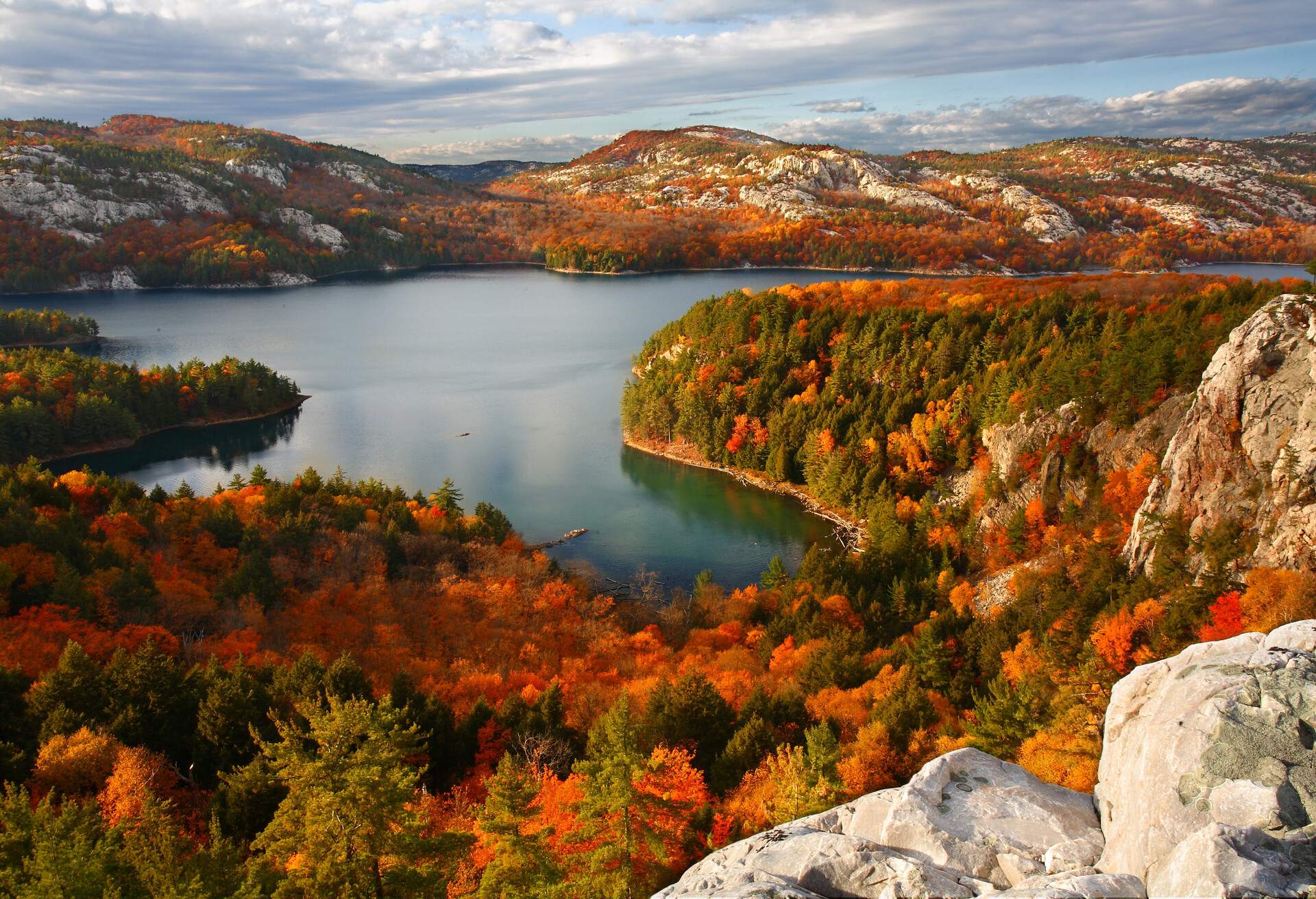
An iconic province in Canada, it’s a great location for anyone who loves hiking and canoeing. With many other activities on offer, Ontario is a great place to camp.
Why Ontario is great for camping
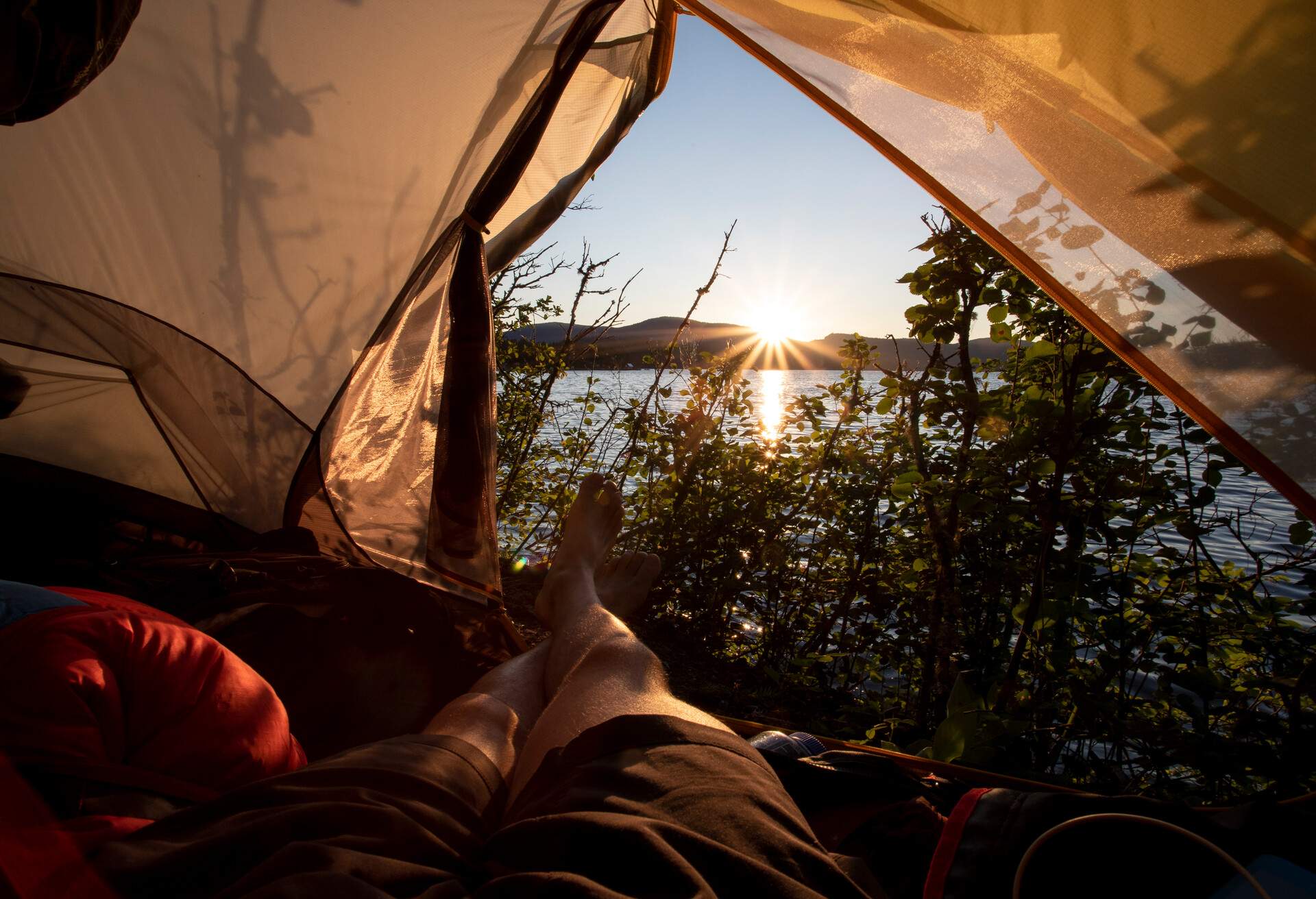
In Ontario, you can wild camp on most land, except for in national parks and nature reserves. Bordering the Great Lakes, this province offers everything from flat grassland to the Canadian Shield and is a great place to enjoy the wilderness.
Where to stay: Lake Superior Provincial Park
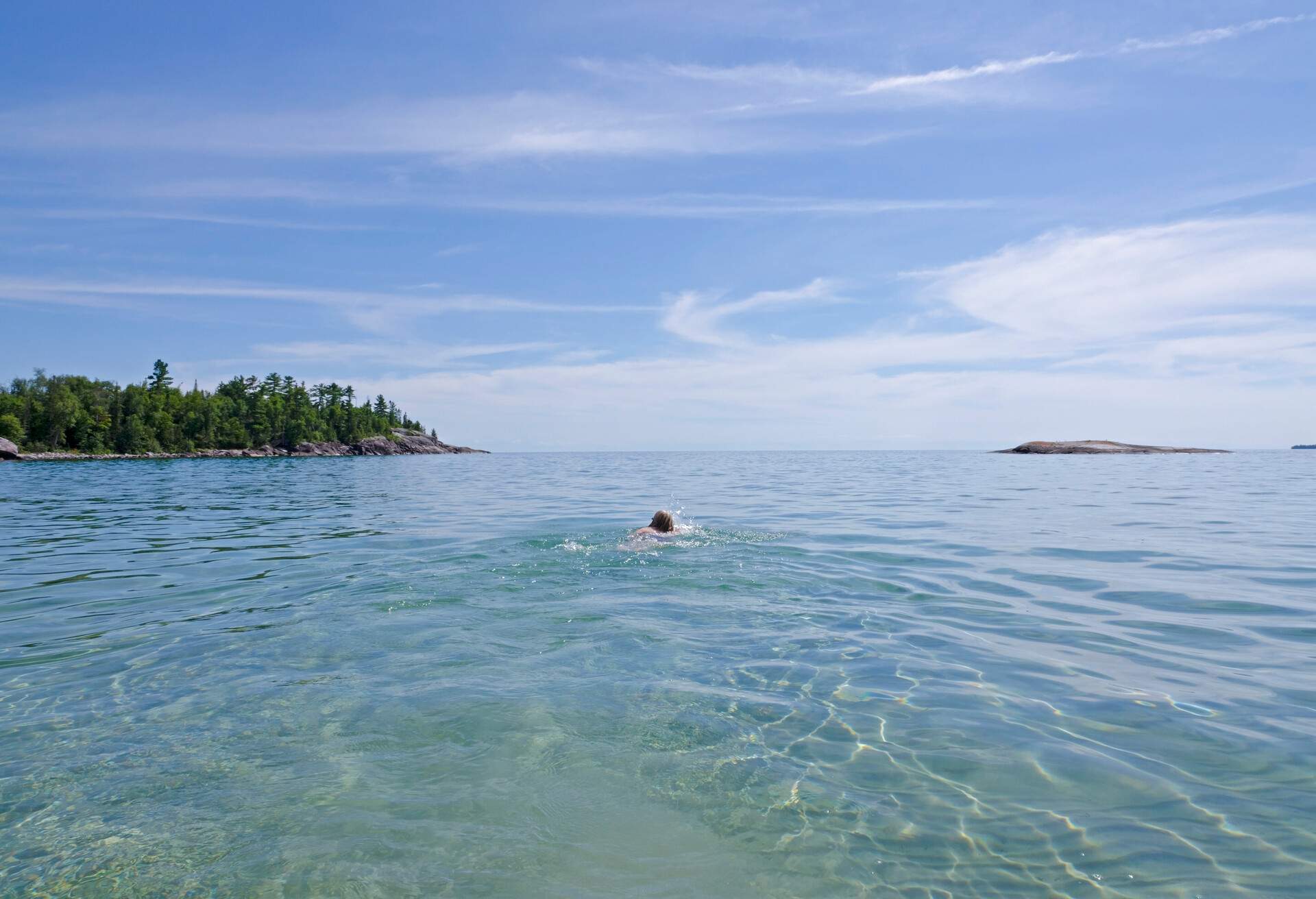
A top place to pitch up for the night is Lake Superior National Park at Gargantua Bay. Campsites here are only reachable on foot (or kayak), but it doesn’t take long from where the road ends. As the campsites are west facing, you’ll be able to enjoy stunning sunsets over Lake Superior. This is an adventurer’s paradise, with there being kayaking, hiking and many other adventures to be had.
The campsites in Gargantua Bay, whilst basic, still offer toilets and showers. Some even offer a place for you to do your laundry. Where they come into their own is the number of activities on offer.
Camping in Canada: Quebec
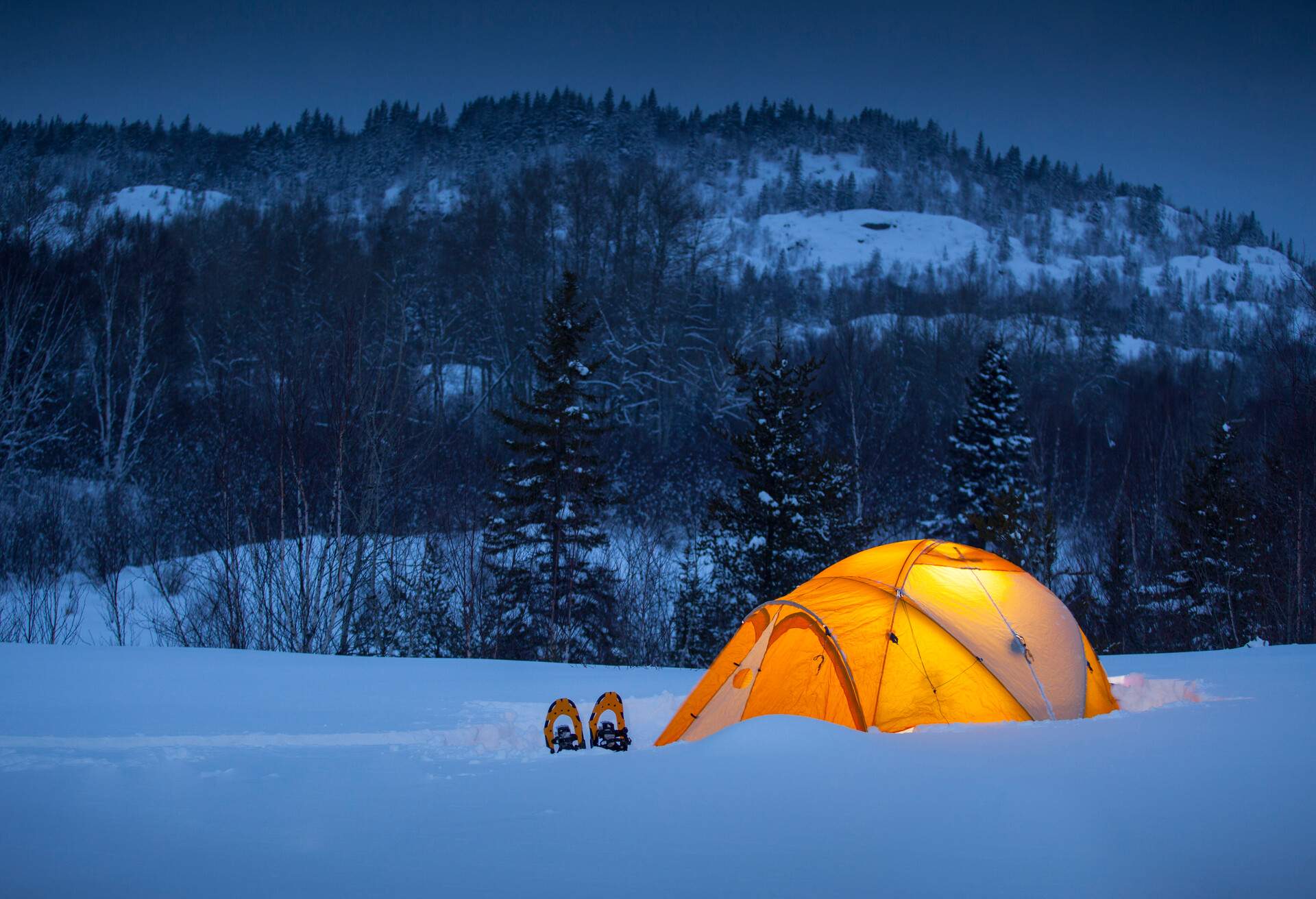
Last but certainly not least, we take you to Quebec, the home of wild camping. Enjoy a diverse landscape and a range of activities as you unwind from daily life.
Why Quebec is great for camping
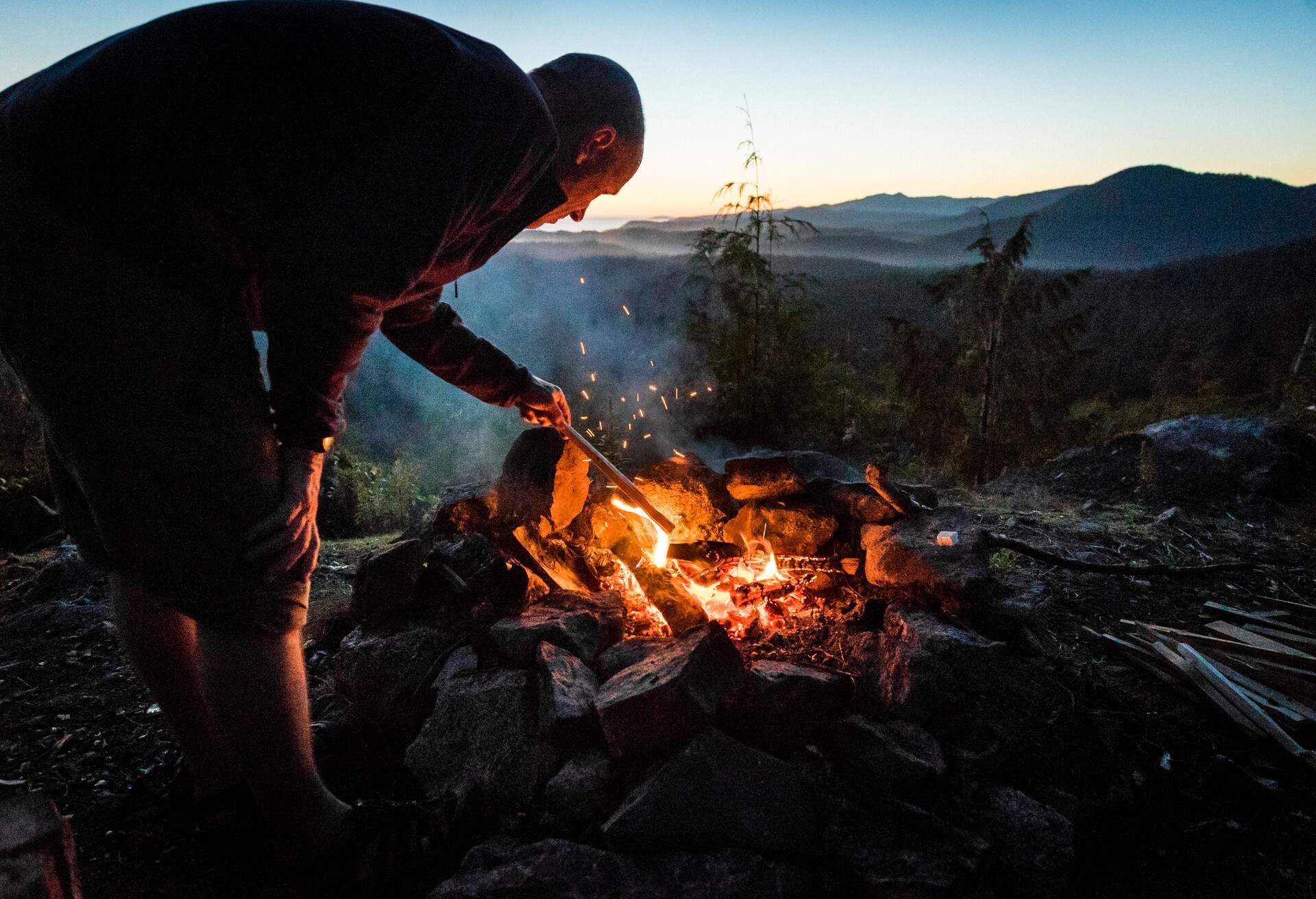
A predominantly French-speaking province, Quebec is also great for camping in Canada. With the option of wild camping or campsites available, you’ll be able to pick and choose as your trip evolves.
Where to stay: Forillon National Park
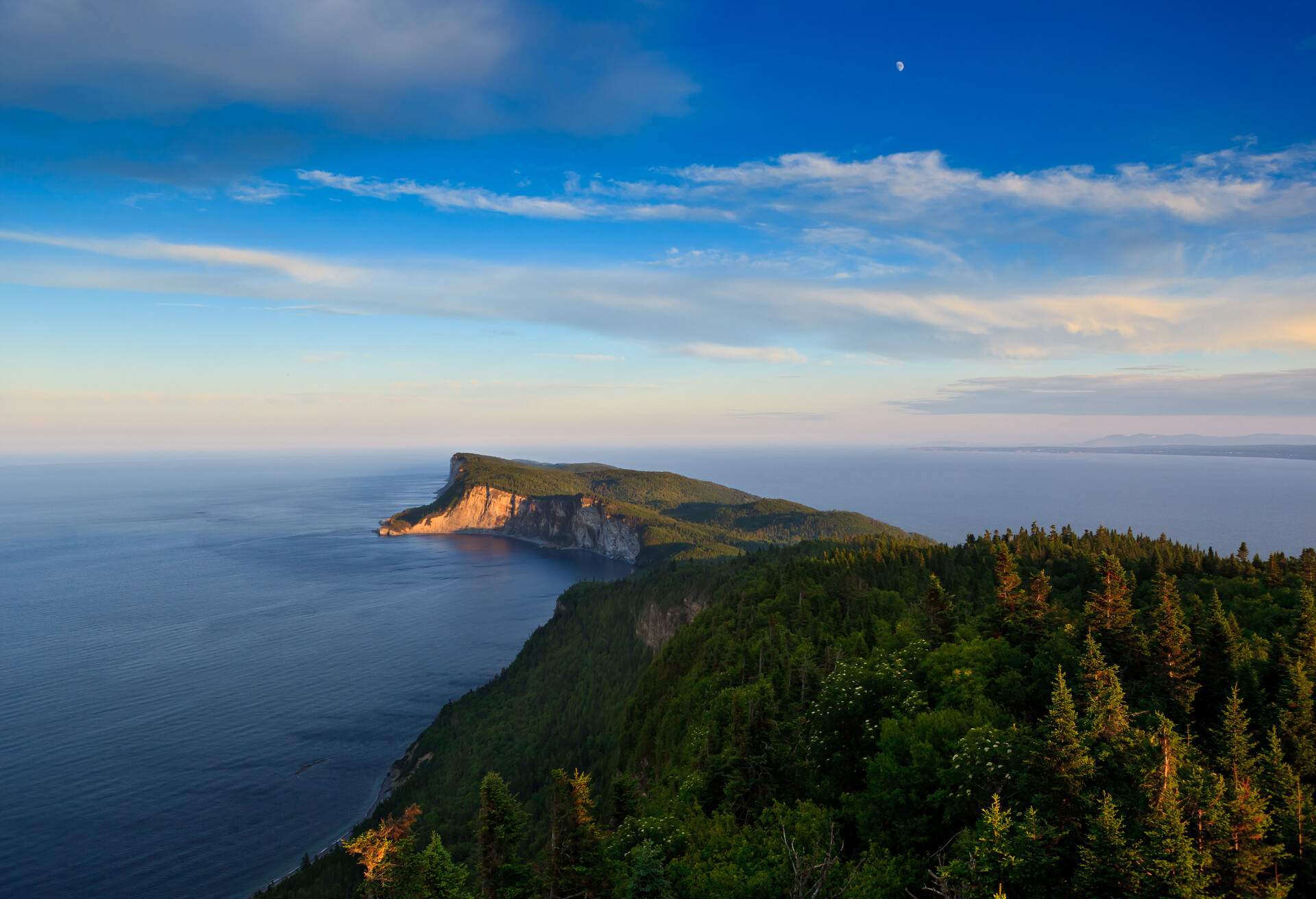
Forillon National Park is one of our favourite areas for camping, with Cap-Bon-Ami Campground standing out amongst the rest. With views to savour, beaches, hiking routes and mountain biking, what more could a camper ask for? A great hike here is that of Les Graves Trail, which will allow you to see seals and whales as you wander along the coastline.
This campsite provides you with the basics, such as a toilet and a recreation centre. You can also get firewood to use in the designated fire pits.
Camping in Canada: FAQs
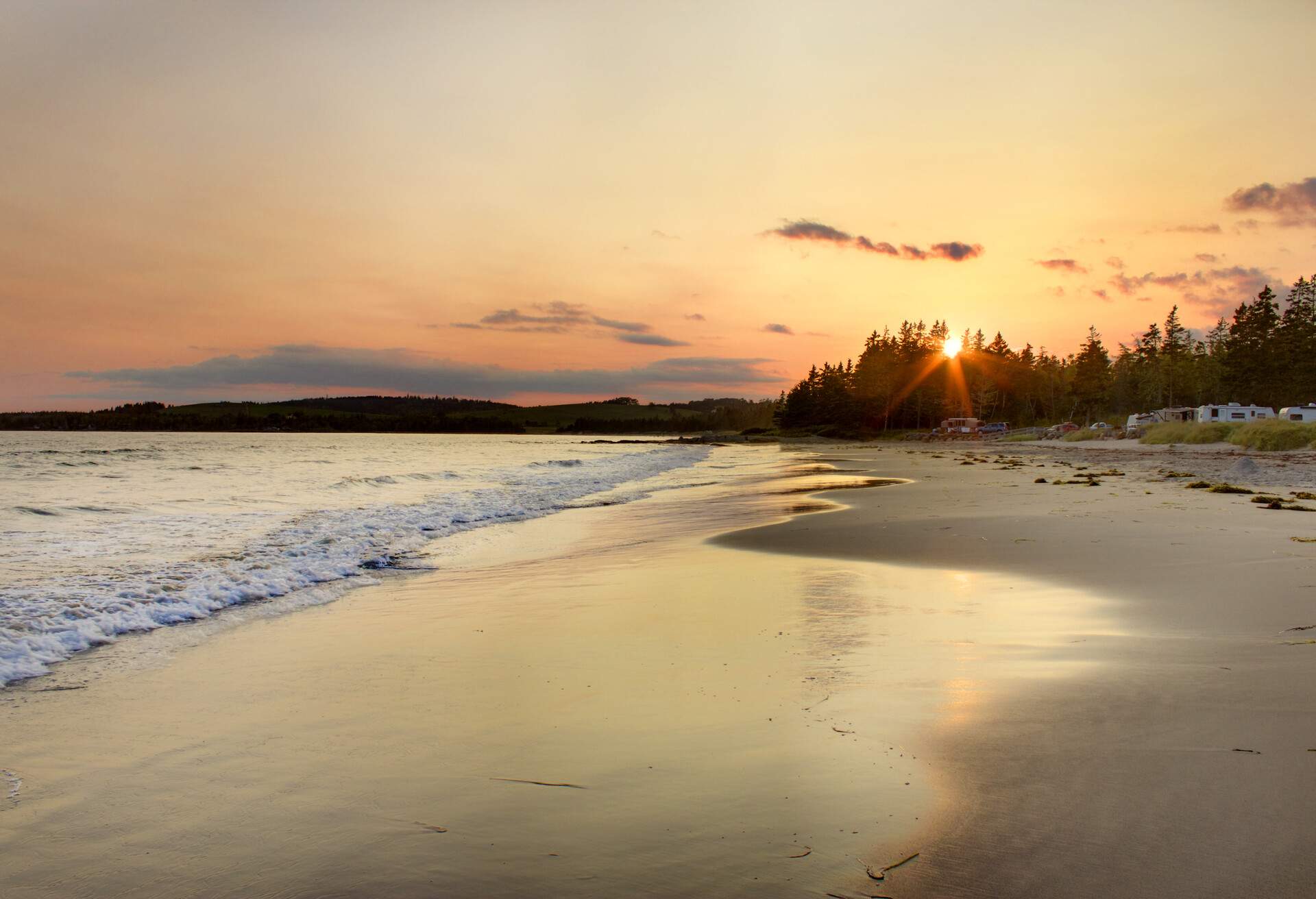
Before you start your camping trip in Canada, make sure you have your most basic questions answered!
Is it legal to camp anywhere in Canada?
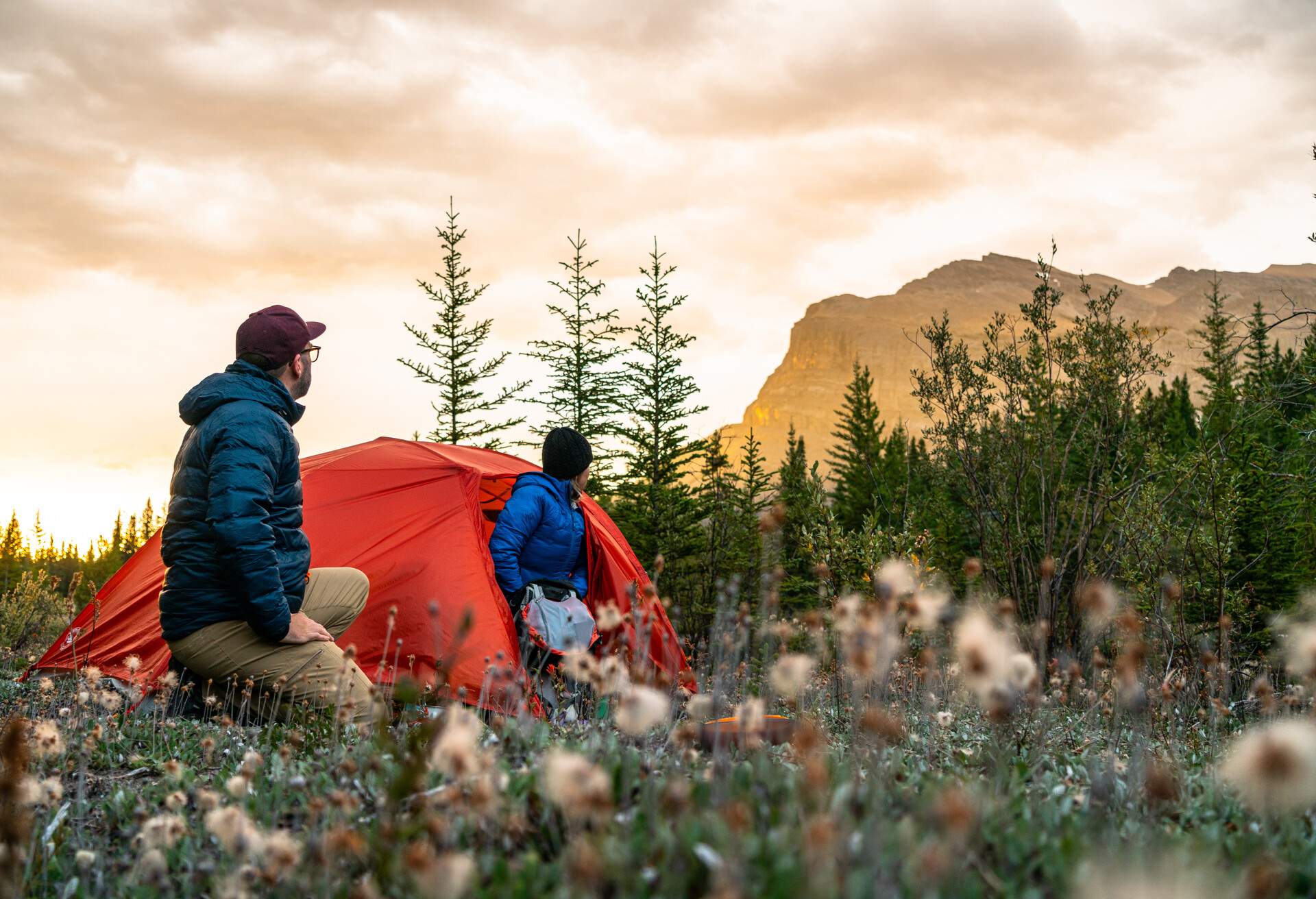
Wild camping is allowed in Canada, but only in certain areas. It’s important you check each province’s laws, as they vary. If wild camping is permitted, then you must follow low-impact standards to ensure that you do not disrupt local habitats and wildlife.
Is wild camping legal in Canada?
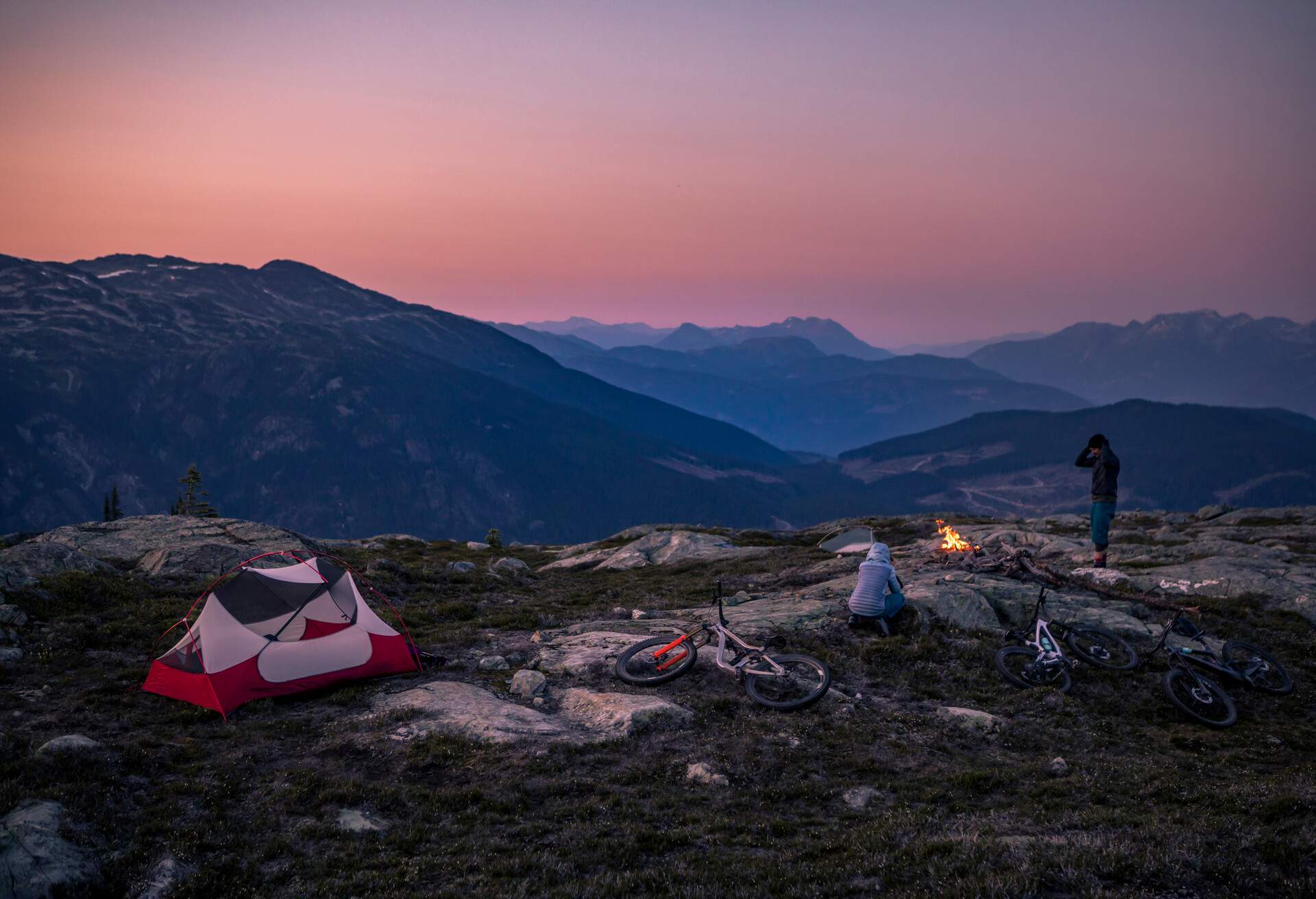
Wild camping is legal in Canada, provided you adhere to each province’s rules. In some provinces, you can camp anywhere, whilst in others, you can only pitch up on land that is not owned by the government. Some provinces do not allow wild camping at all. It’s important you check before you go on your trip.
Where can you camp for free in Canada?
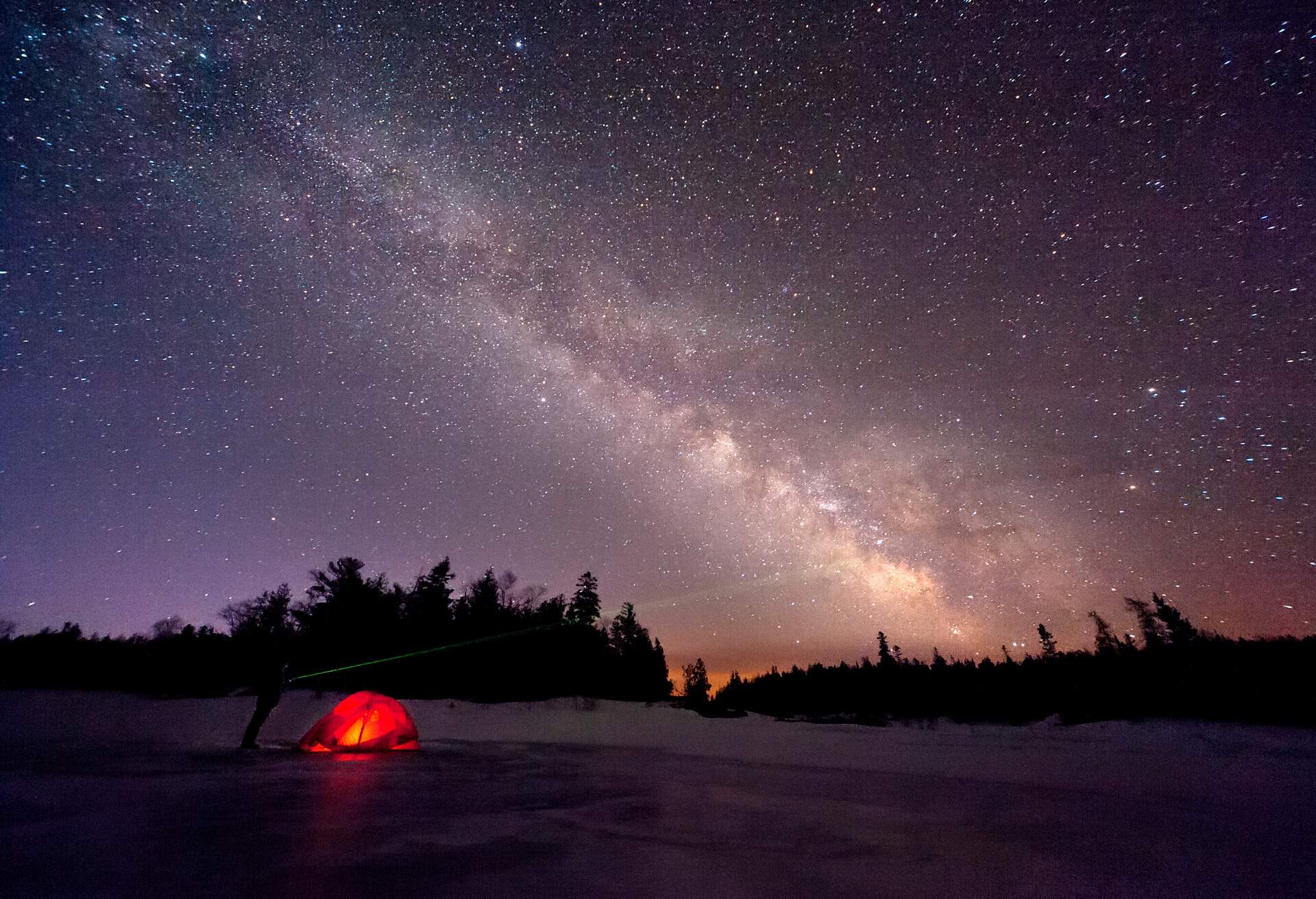
One of the best provinces for wild camping in Canada is Quebec, with most national parks and maritime regions being accessible to all. Another province where wild camping is allowed is Ontario, where you can camp on most land, as long as it’s not a national park or nature reserve.
Camping with your dog? Check out our article on tips for camping with dogs. If you’re after a walking holiday, then you can enjoy some great trails whilst hiking in Ireland. Alternatively, check out the best hikes in Sardinia for more inspiration.
